After being stranded in Kabul following the Taliban takeover, journalist Sonia Sarkar managed to leave on an Indian air force plane, but with no luggage
She describes how her taxi driver negotiated to get her to the Indian embassy, and seeing hundreds of desperate Afghans near the airport, waiting to flee
New Delhi-based journalist Sonia Sarkar arrived in Kabul last week intending to report on the implications of the conflict between Afghan forces and the Taliban on the back of the US troop withdrawal. After the Taliban entered Kabul on Sunday, sparking a mass evacuation of diplomats and civilians by the United States and its allies, she got in touch with the Indian mission in Kabul, which helped her return home. Here is her first-person account of leaving Afghanistan.
As chaos broke out at the Kabul airport on Monday fuelled by Afghans fearful of living under a Taliban regime, my local contacts advised me to stay put and not leave my hotel. One of them, who had been out and about in the Taliban-controlled areas of other provinces, texted me to say: “Pull your curtains shut, they are out on the streets”.
But I wanted to return home. By then, I had learnt that commercial flights would be suspended and the seats I had secured on two flights leaving Kabul for India would not be able to take off as scheduled on Tuesday.
What made me more worried was local women contacts who asked if I had left the country. The Taliban had started looking for female Afghan journalists, they said. Would they do the same to foreign women journalists, I asked?
“But you are Indian,” came the reply, reflecting what I had heard during my short time in Kabul, that “Afghans love Indians but the Taliban hates Indians”.
New Delhi has strongly backed the Kabul government and opposed the Taliban, with no direct channels of communication between them.
As I contemplated my next move, the Indian embassy got in touch with me and a fellow female Indian journalist. They told us to reach the embassy quarters in the next two hours as they planned to leave Kabul in an Indian air force aircraft late at night. My suitcase was already packed.
I hurriedly called a reliable local taxi driver who said he would take some time to reach me. I later found out that he had to battle through a maze of traffic as he was coming from Arzan Qimat, a neighbourhood in far eastern Kabul, near the Pul-e-Charkhi prison. Hundreds of inmates had walked free soon after the Taliban took power on Sunday, while residents were rushing out to draw money and get supplies.
When I gingerly stepped out of the hotel the street outside was deserted but I could see men dressed in shalwar kameez, the traditional clothing of Afghanistan, patrolling neighbouring streets. Some had set up checkpoints and were stopping vehicles. They were carrying what looked like Russian-made Kalashnikov rifles.
After picking up my fellow journalist, we headed for Wazir Akbar Khan, the diplomatic enclave in Kabul.
A group of Taliban stopped us at the entrance to the enclave. They scrutinised our passports then told us to return the next morning.
We could not leave. It would have meant missing our chance of exiting the country. And I feared I did not have any place to go as I had checked out of the hotel, and later learned it was full of Taliban fighters. So we waited in the taxi for three hours before we approached them again.
The taxi driver was able to convince them that it was imperative for us to pass. But one of the Taliban, a man who looked to be in his 20s, said it was getting dark and as we were women, we could not walk into the compound on our own.
Finally, a member of the Indian embassy called one of the Taliban mediators to speak to the men manning the entrance, and they told us to get onto their green “police” vehicle – that they had taken from the erstwhile Afghan security forces on Sunday.
My fellow journalist and I were hesitant but worried that saying “no” would invite trouble, so we threw our luggage on the back and then climbed onto the back seat. Barely 100 metres (330 feet) from the embassy, the vehicle stopped and we were met by an armoured car belonging to the Indian mission.
Once we entered the gates of the embassy, a wave of relief swept over me.
It wasn’t clear when the plan was to leave for the airport because negotiations were under way with the Taliban to let Indian diplomats have safe passage to the airport. An embassy official told me that a day before, some people had been allowed to leave but other Indian nationals were stopped.
“We are at the mercy of their whims,” the official said.
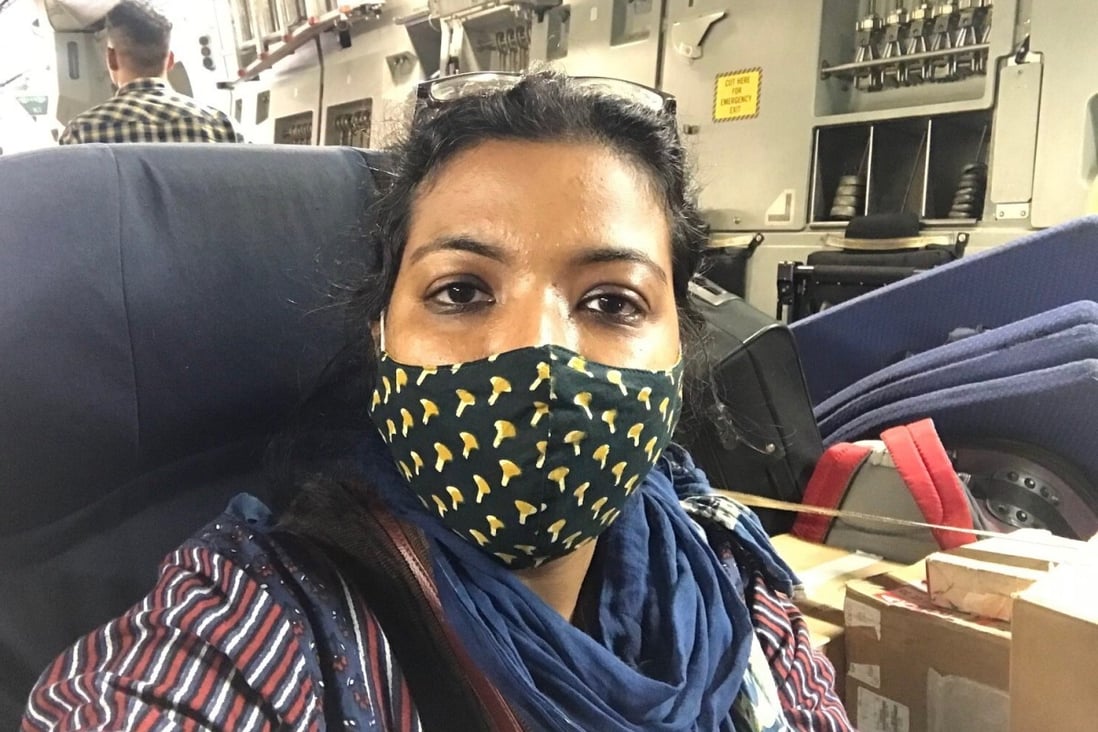
Journalist Sonia Sarkar on a military plane leaving Afghanistan, along with 120 other Indian citizens being evacuated from the country. Photo: Sonia Sarkar

Afghan men and women sit on the road at the entrance to the airport in Kabul, desperate to leave the country. Photo: Sonia Sarkar
At about 10pm local time on Monday, we were suddenly called to assemble, and board the cars. We were ready to leave but many of us could not bring our bags, as we were told the priority was to evacuate people, not luggage. So I left a suitcase full of clothes behind.
This time, the Taliban forces escorted a convoy of 22 armoured vehicles to Kabul airport, where a military aircraft was waiting to evacuate over 120 Indian citizens after New Delhi decided to shut its mission in Afghanistan. Sources said the Taliban had promised to “take care” of the embassy’s property and vehicles, and would hand them over when the diplomats returned.
Near the airport, we saw hundreds of men walking on the streets, many carrying sophisticated weapons. As we got closer, we saw women and children too. None were carrying luggage and looked like they had left their homes in a hurry.
Each time the crowd became unruly, the Taliban fighters patrolling the street would shoot into the air. In a span of 30 minutes, I heard them open fire three times. The civilian men were kept on one side, while the women, some carrying infants wrapped up in blankets and children with schoolbags on their backs, looked petrified and stood on another side.
On Sunday night, over 640 people were evacuated in a US Air Force plane which flew to Al Udeid Air Base in Qatar. Perhaps these people were expecting to do the same.
Since its shock seizure of Afghanistan’s capital, the Taliban has furthered its sophisticated propaganda through a news conference in which it declared that it wants peace and that it will respect the rights of women within the framework of sharia, or Islamic, law. On Tuesday, more women appeared on the streets of Kabul.
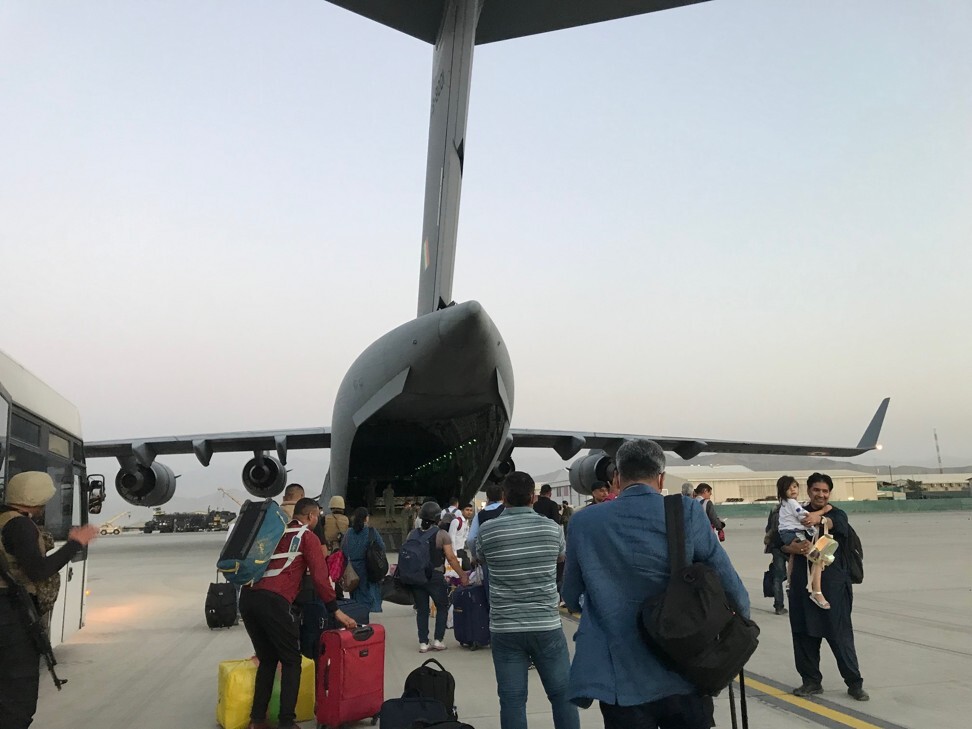
A military aircraft evacuates over 120 Indian citizens from Kabul. Photo: Sonia Sarkar
A female broadcaster for Tolo News, Afghanistan’s largest private broadcaster which lost several journalists to Taliban attacks over the years, interviewed a Taliban official while several female reporters conducted interviews on the street.
But my local women friends told me that they are still fearful of stepping out of their homes.
“The Taliban claim that they will not harm women at work, but we cannot believe their words,” a postgraduate student in Kabul university wrote to me late on Monday night.
It was the early hours of Tuesday by the time our group walked past a Lebanese restaurant and a cafe to reach the airport terminal for our flight.
Some US soldiers were sleeping on the floor while another group was busy making the exit smooth. As we took the stairs to reach the waiting room, they offered us water and made us wear a white wristband. After some minutes, Indians were asked to take off the bands and directed towards the aircraft.
It was about 5am. As I fastened my seat belt, I texted my sister to say the aircraft would take off soon.
I realised, as a foreigner in Afghanistan, I had the option to leave this country. Unfortunately, millions of Afghans don’t.
Sonia Sarkar is a journalist based in India for the past 17 years. She writes on human lives, conflict, religion, politics, health and gender rights from South and Southeast Asia. Her work has appeared in a range of international publications including Al Jazeera, British Medical Journal, Ozy.com and Nikkei Asian Review. She loves to travel and considers the world as her “beat.”
My story was published in South China Morning Post, 18 August, 2021 : scmp.com/week-asia/politics/article/3145543/how-i-left-afghanistan-taliban-escort-airport
India’s LGBTQ community urges Supreme Court to recognise ‘fundamental’ same sex marriage rights
Posted on: March 23, 2023
- In: LGBT | Relationships
- Leave a Comment
In a sign of shifting values, members of India’s LGBTQ community are petitioning for the Supreme Court to
legally recognise same-sex marriages
India struck down a colonial-era ban on homosexuality in 2018 but the socially conservative country of 1.4
billion has to be more accepting
Sonia Sarkar
Archee Roy, 34, a queer Dalit artist in the eastern Indian city of Kolkata, has been in a committed same-sex relationship for over four years. However, she cannot list her partner officially as family in office and bank records even if they were to marry, as India does not legally recognise same-sex marriages.
“India provides a space for heterosexual couples to marry but that space and right is denied to us completely,” said Roy, who belongs to the so-called low caste Dalit community. “Queer people also deserve the right to marry, like any other citizen of India.”
This may soon change, after India’s Supreme Court on Monday referred 19 petitions to a five-judge constitution bench for consideration, with the final arguments scheduled for April 18.
In a sign of shifting values and a challenge to Prime Minister Narendra Modi’s government that has opposed gay marriage, members of India’s LGBTQ community are petitioning for the nation’s Supreme Court to legally recognise same-sex marriages.
The petitions come four years after the same court struck down a colonial-era ban on homosexuality. Many same-sex couples in India solemnised their marriages after the South Asia nation decriminalised homosexuality in 2018 but their marriages remain legally unrecognised.
This means that they are not entitled to rights to own and inherit property together or apply for joint bank loans. They also do not get benefits that heterosexual spouses are entitled to from their spouses’ workplace, such as pensions, bereavement leave and compassionate leave.
“The common thread among all the prayers of different petitioners before the Supreme Court is that same sex couples come within the legal framework entitling them to the benefits as well as protection that married heterosexual couples enjoy,” said Aparna Mehrotra, litigation associate at Bangalore-based non-profit Centre for Law and Policy Research, who is representing three transgender petitioners
Mumbai-based rights activist Harish Iyer appealed before the Supreme Court earlier in March to strike down provisions of this law that interfere with an individual’s constitutional rights to be treated equally, and to extend the law to marriages regardless of the gender, sexual orientation, and sexual identity of the couple. “The privilege to get married is a fundamental aspect of the right to life, freedom of speech, and privacy, as recognised under the Indian Constitution,” Iyer said.
Hyderabad-based Jojo, who prefers to use his first name, runs Queer Nilayam, a support group for LGBTQ people. The 39-year-old said marriage is significant for many same-sex couples who are in committed relationships, to avail themselves of their basic rights and benefits. India also legally recognises marriage of transgender people who hold a certificate documenting the gender
change, but the procedure for obtaining these certificates is onerous and officials often insist on medical proof of gender affirmation procedures, which can be prohibitively expensive.
Akkai Padmashali, the first transwoman whose marriage was legally recognised in India in 2018, submitted a
petition in the Supreme Court in January urging the court to define “spouse” as gender-neutral within the
Special Marriage Act. This would allow transgender people who have not yet obtained certificates or
undergone surgery to be legally wed.
As of now, transgender couples, whose marriages are registered, can be parents legally but for same-sex couples, only one partner has the legal right to adopt or be a legal parent.
In a filing to the Supreme Court this month, Modi’s administration said it opposes recognising same-sex marriages and urged the court to reject challenges to the current legal framework brought forth by LGBT couples.
The government also said in the filing that marriage is accepted “statutorily, religiously and socially” only between a biological man and a biological woman, and that the Indian family consists of these two people and the children born out of their union.
But sociologist Shiv Visvanathan argued that there is no “ideal model” of family as the concept changes according to time, ecology, demography and livelihood.
Visvanathan added that the government is including religion because it considers itself to be the “repository
of a monolithic truth and it wants to establish that certain things are not permissible”.
Mumbai-based non-binary lesbian Naaz, who prefers to use only their first name, said the Indian government remains “ill-informed” and “irrelevant” in current times when gender narratives have changed globally. Naaz said many queer people consider the larger LGBTQ+ community as “family” because they provide “safety” and “unconditional love”, unlike their biological families who have not accepted them as they are.
By opposing same-sex marriages, the Indian government is trying to promote the dowry system, marital rape and domestic violence that are “part and parcel” of the Indian family unit, said Hyderabad-based S Deepti, 39, who was in an abusive marriage with a heterosexual man for 12 years and entered into a same-sex relationship later.
“The government should try to eliminate the flaws in opposite-sex marriages before opposing same-sex marriages,” she said.
But litigation associate Mehrotra said the legal recognition of same-sex marriage would be insufficient, and that new definitions of “spouse” would be required in existing laws around succession, adoption and divorce.
Beyond laws, family set-ups, workplaces, and social spaces, which are still largely patriarchal, have to be more accepting, Roy said
Published in South China Morning Post, March 18, 2023:https://www.scmp.com/week-asia/lifestyle-culture/article/3213988/indias-lgbtq-community-urges-supreme-court-recognise-fundamental-same-sex-marriage-rights
THESE WOMEN LOVED THEIR AK-47S
Posted on: January 31, 2023
| In Sri Lanka, women soldiers who once carried firearms and commanded respect now find themselves shunned. |
By Sonia Sarkar
When Malathy returned home in 2009 after serving more than a decade with the Tamil rebel group Liberation Tigers of Tamil Eelam (LTTE), she was expecting her family would embrace her with open arms. Instead, they were embarrassed by her homecoming.
“Initially, for several months, my family didn’t allow me to step out of home and talk to locals,” Malathy, a resident of Kilinochchi, a town about 37 miles from Jaffna, the capital of Sri Lanka’s Northern Province, told OZY. “They even blamed my previous association with the LTTE for the rejections that my younger sister faced in matchmaking.”
Malathy, who asked to be identified only by her first name, had served in the LTTE since she was just 16 years old. She and her family are of Tamil ethnicity, which means they are minorities in Sinhalese-majority Sri Lanka. The Sinhalese held high-ranking roles during colonial rule, and the Tamil people have faced discrimination from their government ever since the island nation gained independence from the British in 1948. The post-colonial years saw anti-Tamil pogroms that led a group of Tamil revolutionaries to found the LTTE in 1976, with the goal of creating a separate sovereign state called Tamil Eelam. In 1983, a civil war erupted between the LTTE and the Sinhalese-dominated Sri Lankan army. That war lasted 26 years.
Women like Malathy made up as much as one-third of the LTTE forces, which enlisted thousands of children as well as women into its ranks and used many of them as human shields. At least 40% of the LTTE’s suicide attacks were carried out by women combatants, with rebel leaders instructing women to hide explosives in their undergarments and then infiltrate high-security zones. (The FBI has credited the LTTE with pioneering the modern suicide belt and the use of women in suicide attacks.)
Sri Lanka has lately seen renewed upheaval following the economic collapse that led to the ouster of its president last July. Notably, amid recent street demonstrations, protesters in the capital city of Colombo openly mourned Tamil casualties from the civil war.
That civil war killed more than 100,000 people, maimed over 110,000 and left thousands of LTTE cadres — including women like Malathy — in a terrible lurch.
Attacked
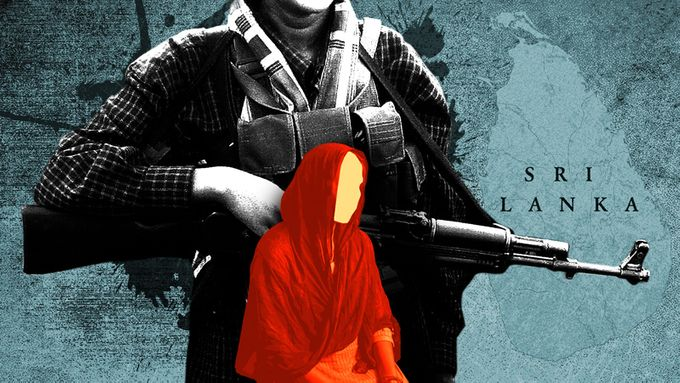
Malathy and many other women of the LTTE felt powerful during the years they spent with AK-47s and T56s hanging around their shoulders.
Although Malathy served primarily in the LTTE’s communications arm, she went through rigorous training that included practice with martial arts and firearms, as well as other military exercises. She even wore the LTTE trademark cyanide capsule around her neck, to swallow in case she was captured.
That’s in stark contrast to her post-war life, in which she resides with a family that’s embarrassed of her association with the LTTE, in a village where police officers and military servicemen monitor her whereabouts and interrogate her about her past.
(Although the Sri Lankan army eliminated the Tamil guerrillas 13 years ago, some former combatants have been arrested and intimidated amid allegations of regrouping themselves for future attacks.)
“My life at home is no less than an exile, it was much better in the jungles,” said Malathy. She is one of many women who served the LTTE and are now searching for acceptance and a new role in Sri Lankan society — and even within their own families.
Human rights activist Ambika Satkunanathan has pointed out that the inclusion of women in the LTTE was “strategic,” and “driven by military needs,” and not done with the aim of addressing gender inequality. Kilinochchi-based activist Sathiyamoorthy Lalitha Kumari, who works for the rehabilitation of women war victims, said that these women were considered “brave” and “powerful” in Sri Lankan society when they carried arms, whereas they are now “looked down upon.”
Strictly defined domestic roles were, in part, what Tamil women hoped to escape nearly four decades ago when they joined the LTTE. Kumari said women were attracted to the LTTE for its promise to abolish caste discrimination and feudal customs such as the dowry system, and usher in social, political and economic equality. Like male combatants, many women believed the onus was on them to fight the repression of Tamils in Sinhalese-majority Sri Lanka, said Kumari. Also, while some women joined the LTTE to escape sexual harassment or rape by Sri Lankan soldiers, there were others forcefully recruited by the rebels.
But female combatants have been ostracized in their return to “normalcy,” even if most Tamil people once supported the rebel group, said Christine Sixta Rinehart, professor of political science at the University of South Carolina Palmetto College. Rinehart, who has studied the LTTE movement, told OZY that patriarchal societies like the one in Sri Lanka are “not yet ready” to see women outside of traditional gender norms.
“Physically strong women, who once used weaponry and challenged gender roles by taking a more masculine persona, are difficult for these societies to accept,” said Rinehart.
Although women played an active role in the Tamil nationalist struggle, there was no fundamental change in gender roles within the Tamil community, said Satkunanathan. Discriminatory practices simply reemerged when the armed conflict ceased.
Return to ‘Normalcy’
The Sri Lankan government claimed to rehabilitate 12,000 LTTE militants between 2009 and 2012, in an effort to reintegrate them into society. In the case of women, that effort was geared toward making the ex-combatants more “feminine” by training them as makeup artists, seamstresses and nursery school teachers.
Today, Malathy works at a local grocery shop. She tried but failed to borrow a sum of 500,000 Sri Lankan rupees, or about $1,360, to establish a photography studio. It would have been a rare studio run by a woman in her village, Malathy said.
She dreamt of using her photography skills, which she honed during her LTTE days, to become financially independent, and she had hoped to train local girls in photography as well.
A former combatant who asked to be referred to only as Lakshmi told OZY that she wanted to teach self-defense lessons to local girls. But locals refused to send their children to her. Lakshmi, now 41, suspects that parents worry she would teach the children something “bad” and influence them to become “immoral.”
“People don’t want girls to be self-dependent because that would mean she would defy societal norms,” Lakshmi said.
Based on interviews with 20 ex-combatants, the Routledge Handbook of Human Rights in Asia found that business loans have not provided sufficient economic stimulus to women who served the LTTE, and that they continue to have difficulty finding other work.
These women face other challenges too. Satkunanathan said there have been human rights violations in the form of sexual abuse during the so-called rehabilitation process. Rinehart said women who served in the LTTE are more likely to be viewed as “loose” by men.
“People don’t think we deserve to be part of the society,” said Malathy. “They want us to remain isolated.”
The story was published in OZY:https://www.ozy.com/pg/newsletter/the-daily-dose/455544/- January 12, 2023
An ode to Pele, and my father, who got a glimpse of ‘black pearl’ in 1977
Posted on: December 30, 2022
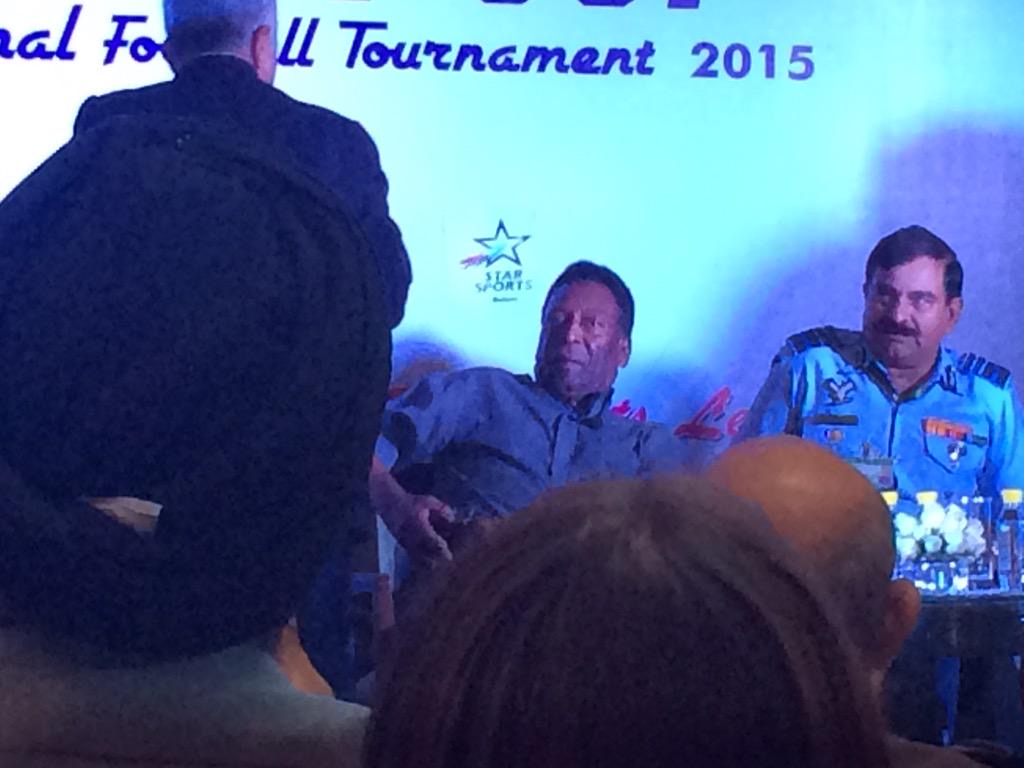
Pele at a press conference in Delhi, 2015. Credit: Sonia Sarkar
Sometimes, you feel that your life has come to a full circle when you do what your parents have done many years ago. For me, one such moment was when I saw the legendary footballer, Pele, in 2015, 38 years after my father saw him at the erstwhile Dum Dum Airport, when he was visiting Calcutta in 1977.
My father, who was part of the football frenzy crowd at the airport on September 22,1977, had recalled the chaos to get a glimpse of “black pearl.”
“People gathered at the airport four hours in advance to get a glimpse of Pele. There was complete madness. My best friend, Shitey, and I were on my Lambretta scooter outside the airport, waiting for Pele to come out..That’s when the police lathicharged. It was a complete pandemonium. We got a glimpse of the man and stood numb for a few minutes,” — my father, who played football for years in the ’60s and ’70s, had told me.
I have heard this little anecdote so many times from my father that I realised that even for my atheist father, Pele was no less than god.
In 1977, Pele went to Calcutta with the touring New York Cosmos team and played an exhibition match against Mohun Bagan to a packed Eden Gardens Stadium on September 24. The match ended 2-2 and since then Pele is one of the football’s biggest icons that the city prefers to identify itself with.
But unlike 1977, the airport in Kolkata in 2015 didn’t witness the madness upon his arrival. It, however, slowly caught up and many tried to get a glimpse of him when his convoy was struggling to make its way through the five-star hotel in Alipore, where he stayed for three days. During his stay in Kolkata, he inaugurated a Durga Puja pandal.
Later, he came to Delhi.
Pele was in Delhi for the final of the Subroto Cup, which was played between India U-17 and Indonesia’s Daftar Nama Kontingen at the Ambedkar Stadium.
Pele was very surprised to know that more than 32,000 children participate in the tournament every year. He insisted that the importance should be on the young players. He walked with a stick as his chief security staff Ben held him from the other side.
He was keen to visit Taj Mahal but his schedule did not permit it.
One of the officers who closely interacted with Pele during his stay in Delhi had told me that he felt “claustrophobic” to see the unruly crowd in Calcutta. “People swarmed… he found it very suffocating,” he said.
Even when I had asked the legend about his Calcutta tour during a press conference in Delhi, he just said, “the city has become big.” But he added, he was “emotional” about Calcutta because of the crazy football lovers.
Pele said that he would like to tell the youngsters to learn to be a part of a team, something which his father had told him.
But people also got a glimpse of his sense of humour in Calcutta. At a press conference, someone asked, will there be another Pele? He had said, “my parents have closed the machine.”
Pele, who preferred light eating, limited himself to meat seekh with vegetables for lunch and fish with wine for dinner. The organisers did not ask him to try anything “Indian”. “We just gave him what he wanted,” one of the IAF official said.
India’s drought-hit farmers make a fruitful pivot to ‘the only crop that can survive’: hardy dragon fruits
Posted on: December 28, 2022
Indian farmers favour dragon fruits for their profitability, resistance to pests, ability to grow in arid conditions and comparatively low water needs
The high profit margins have even attracted interest from affluent professionals – but not everyone has enjoyed the fruits of their investments

Dragon fruit is gaining popularity as the crop of choice for India’s fruit farmers, who favour it for its profitability, resistance to pests, ability to grow in arid conditions and comparatively low water needs.
Siddhu Arani planted 1,600 dragon fruit saplings in drought-hit Maroli village, Maharashtra state, nearly a decade ago. Within three years, the 50-year-old fruit farmer had not only recovered her initial 600,000-rupee (US$7,250) investment but was actually making an annual profit of 400,000 rupees.
“The annual profit is 50 per cent more as compared to my earnings from grapes and pomegranate that I cultivated before,” she told This Week In Asia. “In drought-affected areas, dragon fruit is the only crop that can survive.”

Anuradha Anandrao Pawar with some of the dragon fruits her and her 80-year-old farmer-husband Anandrao Baburao Pawar have cultivated. Photo: Handout
Several farmers, who previously cultivated traditional crops in the semi-arid and drought-hit regions of Maharashtra, Gujarat, Karnataka and Andhra Pradesh, have over the past six years started to grow dragon fruits instead.
This “exotic” fruit with scaly spikes and high nutrient values was grown only in home gardens thirty years ago, but by 2020, 12,000 tonnes of dragon fruits were being produced annually in India in some 4,000 hectares of land. Cultivation will further expand to 50,000 hectares of land in the next five years, according to the Indian Council of Agricultural Research – National Institute of Abiotic Stress Management.
China, Vietnam, and Indonesia currently account for about 93 per cent of global dragon fruit production, but India is muscling in on the market. This year, India exported 1,150 shipments of dragon fruits to Nepal, Maldives and Bhutan, after also shipping the fruits to the UK and Bahrain the year before.
Goraksha C Wakchaure, a senior scientist at the Indian Council of Agricultural Research, said that dragon fruits had come to the “rescue” of Indian farmers facing climate change-related disasters such as frequent droughts, floods, land degradation, extreme temperatures and pestilence.
Dragon fruits, he added, can be cultivated in degraded land and drought-prone areas, across diverse temperature ranges.
They are also resistant to pests and requires less water than other plants such as sugar cane, said 80-year-old Anandrao Baburao Pawar, one of the 700 dragon fruit farmers in Maharashtra’s Sangli district. At summer’s peak, an acre of dragon fruit crop requires about 3,000 (13,600 litres) of water each week. Sugar cane plants, by comparison, need eight times that amount.
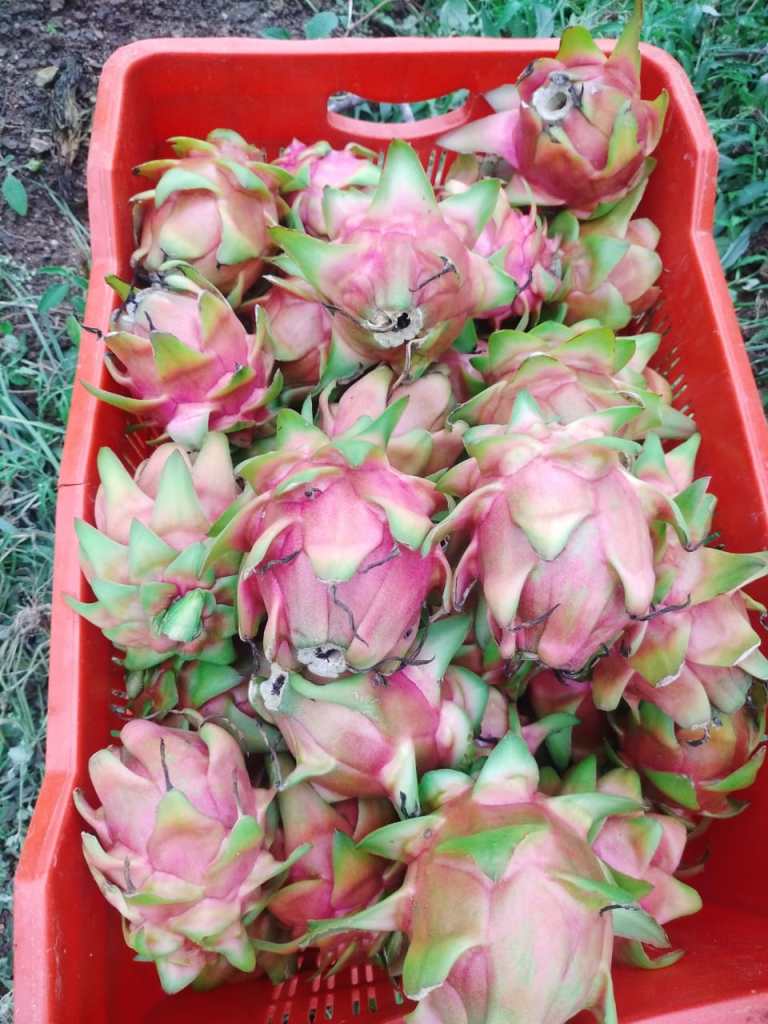
Siddhu Arani’s farm produce. Credit: Siddhu Arani
NV Deshpande, director of the Yerala Projects Society – a non-profit organisation that helps implement innovative farming techniques in drought-affected areas – said dragon-fruit farmers were able to recoup the initial capital cost for one acre (o. 4 hectares) of cultivation – 350,000 rupees – within three years, while also making 400,000 rupees in cumulative profits. Maintenance costs about 30,000 rupees annually.
This makes dragon fruit cultivation more profitable than growing grapes, for example. Cumulative profits from one acre of grape cultivation barely reach 100,000 rupees over three years, Deshpande said, yet farmers must spend 250,000 rupees on upfront costs and the same amount on yearly maintenance.
Lata Aigale, a farmer in Ajur village of Karnataka’s Belgaum district, said she hoped that the authorities would make it easier for dragon-fruit farmers – who often struggle with start-up costs – to access government subsidies.

Lata Aigale (front) pictured with her dragon-fruit plants in Belgaum district, India’s Karnataka state. Photo: Handout
Farmer Pawar’s 1,320 dragon fruit plants, which occupy one acre of land, yielded 200kg of fruit in 2017, 1.7 tonnes in 2018, and 6.6 tonnes in 2019.
He then planted 3,280 additional saplings over another acre of land and together those two acres yielded 9.2 tonnes of fruit this year, earning him 820,000 rupees (US$9,900) in profit.
In Madhya Pradesh’s Chiklod village where temperatures can hit 45 degrees Celsius in summer, horticulturist Amitesh Argal, 30, started dragon fruit cultivation last year in rocky, sandy soil that repelled water. Still, he expects to recover his capital investment of 700,000 rupees within the next two years.
Deshpande said dragon-fruit farmers in Maharashtra make profits every year, unlike grape growers, who often owe debts of at least 300,000 rupees at the end of the growing season.
Many debt-ridden Indian farmers, hit by higher production and transport costs – on top of intense drought conditions – have taken their own lives over the past two decades. Last year, 5,563 agricultural labourers died by suicide, with the highest toll being in Maharashtra, with 1,424 deaths.
The profitability of dragon-fruit cultivation is also attracting investments from affluent professionals.
Investment banker Parth Mirani invested 6 million rupees (US$72,400) in 2018 for nine-acres (3.6 hectares) of dragon fruit cultivation in Central India’s Chhattisgarh state – where the climate is dry throughout the year – which made him an annual profit of 2.5 million rupees from the third year on.
But not all investments have been so successful. Kalpesh Hariya, director of Auroch Agro Products, and his two partners invested some 10 million rupees in six hectares of land in Gujarat’s semi-arid Kutch district in 2014.
The results were poor, at first. Hariya said yields only started to improve in 2016 after they had lowered the soil’s pH level, making it less alkaline, and replanted more than 18,000 saplings. A year and a half later, they harvested some 14 tonnes of fruit.
For Mirani, the investment banker, dragon fruit will soon stop being regarded as “exotic” as large-scale production reduces cost.
Retail prices for dragon fruit have been on the decline in India recently. A year ago, one dragon fruit would set you back almost US$2 in most big Indian cities, whereas now they can be picked up for about 60-80 rupees (72 US cents to 97 US cents) each.
[Published in South China Morning Post — https://www.scmp.com/week-asia/article/3204362/indias-drought-hit-farmers-make-fruitful-pivot-only-crop-can-survive-hardy-dragon-fruits
Date: 25 December, 2022]
Finding painful common ground
Posted on: December 27, 2022
Many Sinhalese Sri Lankans took to the streets to protest against the economic pain they are enduring. Now they are realizing how the minority Tamils suffered, particularly during the decades-long civil war.
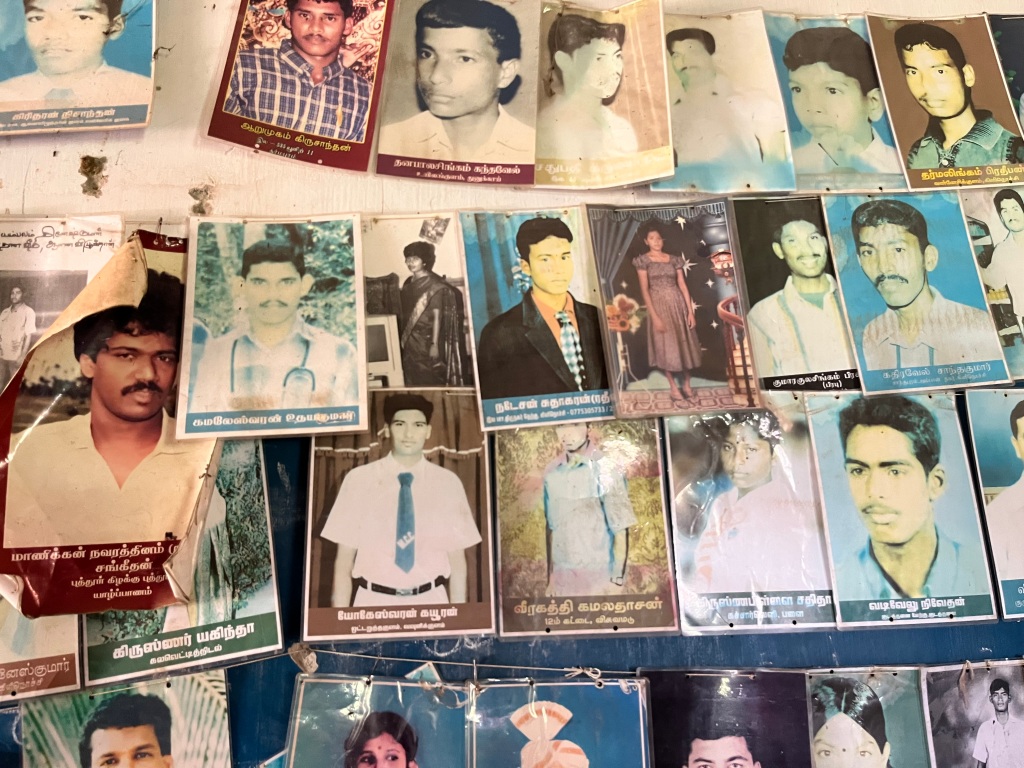
Photographs of people disappeared in 26-year-long civil war. Credit: Sonia Sarkar
Mass protests, or aragalaya, are no longer a daily affair in Sri Lanka. The demonstrations that helped oust a government a few months back are far from being over, though. Current President Ranil Wickremesinghe has even threatened to arrest those planning yet another aragalaya, but Sri Lankans reeling from the effects of a severe economic downturn may not be in the mood to heed his words.
Yet while the aragalaya reflect the breakdown of the relationship between Sri Lanka’s people and their leaders, the protests seemed to have opened an opportunity for dialogue between the majority Sinhalese and the minority Tamils. With the participation of people across class, caste, religion, and region, the aragalaya even raised hopes for reconciliation between the two communities that have generally had trouble getting along.
“A large section of Sinhala people have been indifferent toward the plight of Tamils as the latter were projected as an enemy of the country by successive central governments,” says Ceylon Teachers’ Union General Secretary Joseph Stalin, who has been a regular at aragalaya that began early this year.
But now, he says, “Sinhalas have realized that the suffering of Tamils has been ignored for too long.”
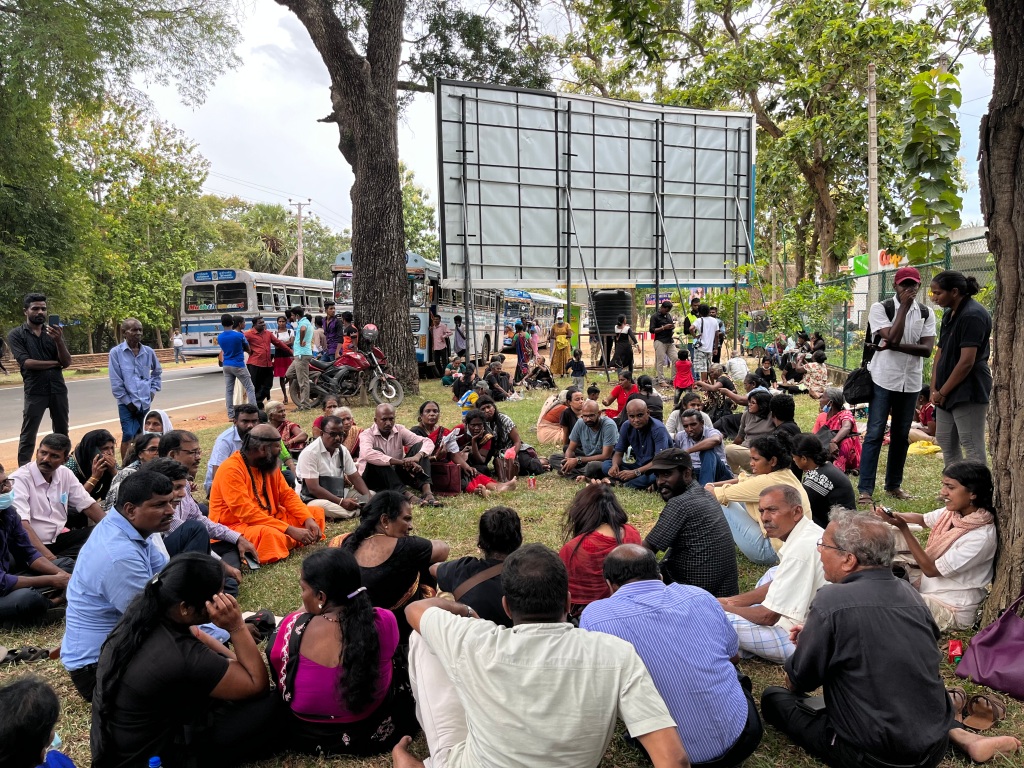
Sinhalas and Tamils sit at a protest against government over disappeared people in 26-year-long civil war. Location: Kilinochchi.
Credit: Sonia Sarkar
About 75% of Sri Lanka’s 23 million people are Sinhalese, most of whom are Buddhist. The Tamils meanwhile make up about 15% of the country’s population. Most Tamils are Hindus; a significant number are Muslim while there are also Christian Tamils.
Between 1983 and 2009, parts of Sri Lanka became stages for savage warfare between the country’s military and the rebel Liberation Tigers of Tamil Eelam (LTTE). While the war raged, over 100,000 people — mostly Tamils — disappeared in Sri Lanka. For decades now, Tamils have been looking for their missing fathers, husbands, sons, and daughters. But the majority Sinhalese population barely paid any attention to their plight, with many saying simply that it was not their fight.
In fact, for the first time, Kulandaivel Sumitra Devi, a Tamil who has been looking for her husband who went missing in 2008, says that she is hopeful that the government may finally begin listening to people like her. She says that this is because a section of the Sinhalese population is finally standing by the side of Tamils.
“Since the Sinhalese activists have expressed their empathy toward us, we are hopeful that our pleas will be answered now,” says Sumitra Devi, 42, a resident of Ampara in Eastern Province. “Unfortunately, the Sinhalese people took more than three decades to stand by us, to hold our hands.”
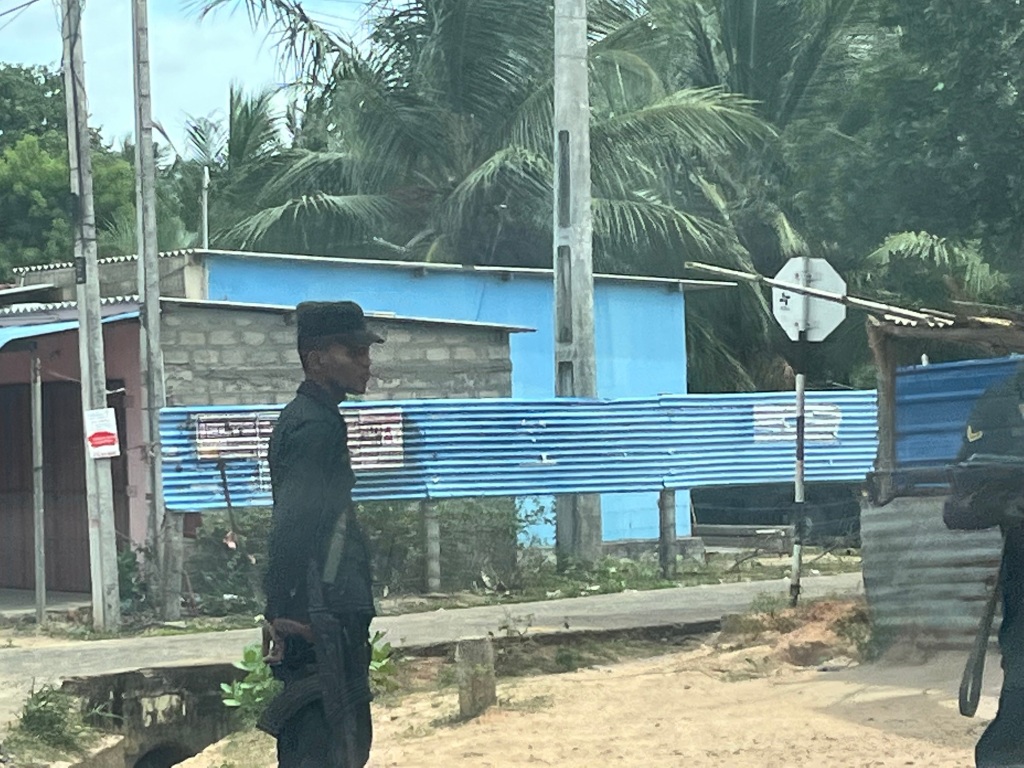
Army checkpoint at Kilinochchi. Credit: Sonia Sarkar
Been there, done that
On Aug. 12, Sumitra Devi, along with hundreds of other victims of the civil war from northern and eastern provinces — the traditional Tamil homeland — gathered at Kilinochchi, about 100 km from the Northern Province’s capital Jaffna, demanding justice. They were joined by over 35 Sinhala students, activists, and civil society members, who had traveled about 350 km from the country’s capital Colombo to express solidarity with them.
Earlier, on May 18, hundreds of citizens including Sinhalese Buddhists gathered at Colombo’s Galle Face Green, an open public space overlooking the Indian Ocean. The site had been the center point of aragalaya between April and July this year. The May gathering, however, was to mourn the 2009 killings of Tamil civilians in the last battle the army had fought with LTTE guerrillas at Mullivaikkal in Northern Province. For more than a decade, Colombo had celebrated the occasion as “Victory Day,” to hail the Sri Lankan army’s win in the war.
Some Tamils believe that the current nationwide economic crisis that led to severe power cuts and rising food and fuel prices has been an opportunity for people living in the west and south of the country to finally understand what Tamils had gone through during the civil war.
Ampara resident Devasahayam Ranjana, 69, says that people in the north faced power outages and economic embargoes on many consumer goods including diesel fuel, petrol, fertilizer, pesticides, and medical products during the war. She says that they also faced restrictions on fishing, imposed by the Sri Lankan government in the 1990s.
“Economic crisis is not new to us, we have seen it all,” says Ranjana, whose husband and eldest son have been missing since 2009.
Similarly, enforced disappearances, arbitrary arrests, and heavy deployment of military personnel in civilian areas — now routine in Colombo in the south ever since Wickremesinghe was elected president in July — have been fairly common in the north and east.
Sushila Devi, a resident of Batticaloa in the east, recounts how her 18-year-old son was dragged out of a bus by the Sri Lankan army personnel in 2007 while they were traveling from Trincomalee to their hometown. She says that she ran pleading for help behind the army vehicle for about 100 meters while her son, who was in the vehicle, held tightly onto the gold chain around her neck. But a soldier kicked her hard on the stomach, forcing her son to let go of her necklace. The vehicle sped away, and she was left lying on the street, devastated and in pain.
“The army never gave me my son back,” says Sushila Devi, who has even approached the International Committee of the Red Cross, seeking justice. “I have the right to know if he is alive or dead.”
The army gave no answers to Sumitra Devi either — even after she found her husband’s identity card with one of the army personnel deployed at the checkpoint near their family’s farm, just days after he went missing. She remarks, “The army never realizes that they are accountable to us.”
Detained, disappeared, dead
In 2015, former Sri Lankan President Maithripala Sirisena proposed to establish a truth and reconciliation commission. But the United Nations at the time said that the country was “not yet ready or equipped” to conduct a “credible investigation” into suspected violations.
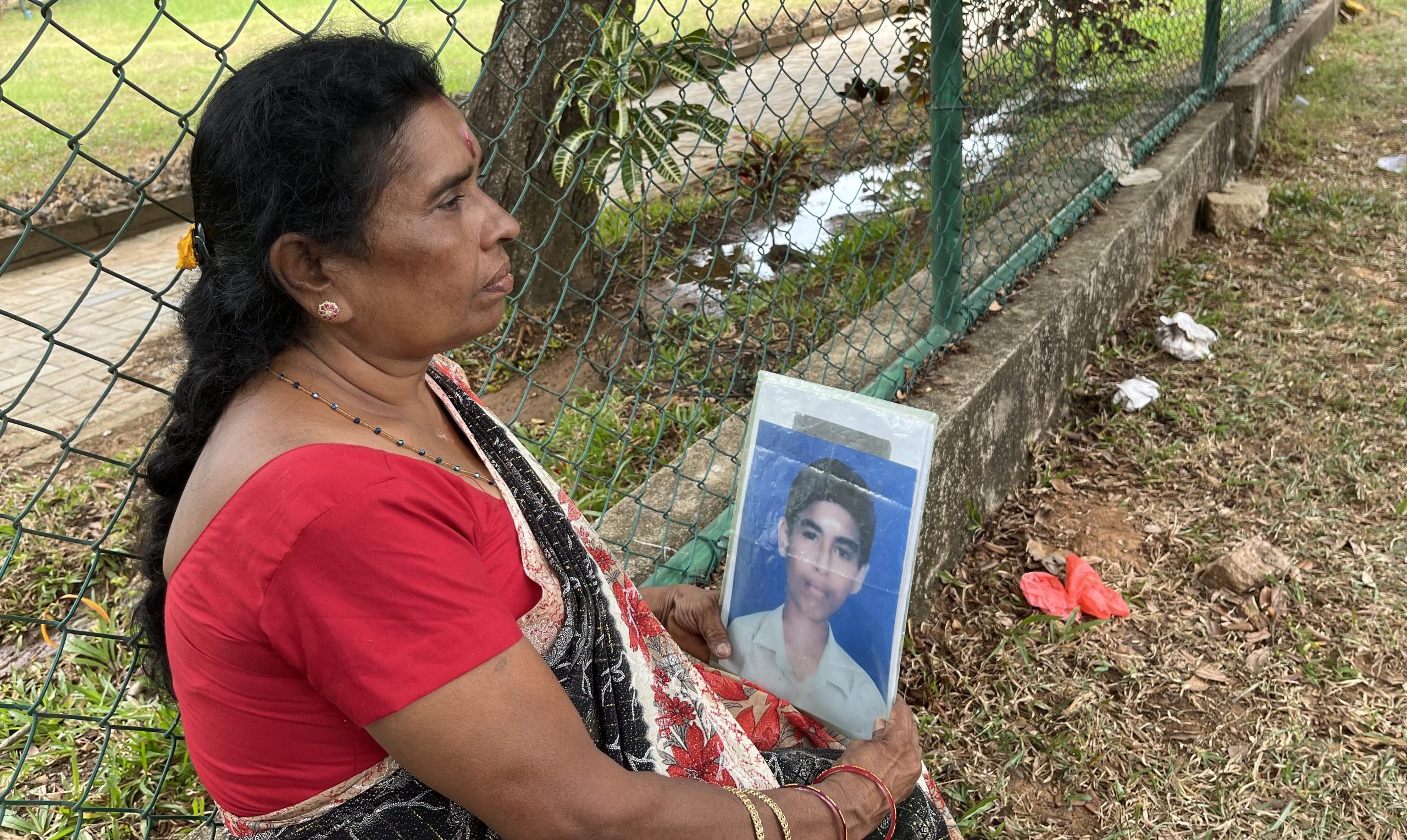
Human rights defender Ambika Satkunanathan says that up to now, the Sri Lankan government does not have complete data on the number of people who disappeared or were killed during the war.
Satkunanathan notes that some people were issued death certificates for their family members who were victims of enforced disappearances, and were also given paltry compensation by the government. Many were forced by the government to accept these death certificates, she says, adding, “Some accepted compensation because of their dire economic circumstances.”
Satkunanathan says that information on those who were killed or disappeared can be considered complete “only if there is no sense of fear among Tamils.”
Tamils, however, continue to live in fear. According to Amnesty International, the families of the disappeared allege harassment and intimidation by law enforcement officers through unannounced visits, intimidating phone calls, and surveillance. Additionally, says the international rights watchdog, the state security apparatus of late has begun approaching the judiciary to pre-emptively restrict the victims’ freedom to protest.
Sri Lankan police also still randomly book Tamils under the Prevention of Terrorism Act (PTA) for their alleged former association with the LTTE. Just last April 25, 10 Tamils who were arrested for holding a beach memorial for the civil-war Tamil dead were finally released after seven months in detention. Human Rights Watch also points to a 2020 report by the Human Rights Commission of Sri Lanka that said 84% of those arrested under PTA were tortured and that some have been held for as long as 10 years without trial.
“(A) Tamil Hindu priest, arrested in February 2000 for suspected involvement in an LTTE attack, was held pre-trial under the PTA until 2015 when he was convicted and sentenced to 300 years in prison,” the Human Rights Watch said in a 2022 report. The conviction, it continued, was based on a confession that the priest claimed was “obtained through repeated torture and recorded in a language he could not understand.”
Satkunanthan says that after the end of the war in 2009, many Tamils who were not LTTE combatants were detained at military-run rehabilitation centers, in contravention of international humanitarian law. Now the same oppressive system is being extended to target those who participate in aragalaya.
Shared oppression
Satkunanathan has filed a motion at the Supreme Court against a proposed Bureau of Rehabilitation Bill that will allow the detention of possibly any citizen, bypassing the judicial system, in rehabilitation centers. She describes the bill as inconsistent with the fundamental rights enshrined in the Constitution of Sri Lanka that guarantee freedom from arbitrary arrest and detention, torture and ill-treatment, and discrimination.
For his part, Mahendran Thiruvarangan, a senior lecturer in English at the University of Jaffna, agrees with the observation that Sri Lankans living in the south are now becoming aware of the atrocities against the Tamils.
Yet, he cautions that the relationship between the Tamils in the north and east, and the Sinhalas in the south, may remain precarious. Thiruvarangan says that a protest rally was held by academics, trade unionists, and civil society groups in the north to show solidarity with those holding aragalaya. But an active Tamil nationalist lobby, which demands self-determination, discouraged the sympathy protests.
According to the academic, while the nationalist Tamils acknowledged that May 18 was observed by aragalaya protesters in Colombo, the nationalists had pointed out that there was no call for political justice for the genocide of Tamils or reconciliation.
One of the main bones of contention among Tamils in the northeast is that the Sri Lankan government has been taking over religious sites of Tamil Hindus and putting up Buddhist stupas and temples in the region. Recently, there were attempts to annex two Sinhala-majority villages in the Anuradhapura district in the North-Central province to the Tamil-majority Vavuniya district in the Northern Province.
Thiruvarangan also says that lands belonging to many Tamils displaced in the war have been acquired by the military over the years. He adds that the Sri Lankan government has also tried to give a Sinhala-Buddhist character to the territories in the north under the pretext of archaeological research.
For Sumitra Devi, these attempts to “take over” Tamil-dominated areas pose a big threat to their existence. She says, “Sinhalas must oppose these attempts if they really believe that it’s time to stand by us.” ●
Published in Asia Democracy Chornicles on December 13, 2022
Link; https://adnchronicles.org/2022/12/13/finding-painful-common-ground/
Singapore is a politically passive place where an openly gay reverend is making waves.
Posted on: December 14, 2022
– by Sonia Sarkar in Singapore

Miak Siew at FCC
In June, when Singapore refused to renew the work pass of Bangladeshi migrant worker Zakir Hossain following his social media post about the living conditions endured by fellow workers, Reverend Miak Siew of the Free Community Church (FCC) took to Facebook to make a radical proposition. He suggested that, rather than punishing those with differing views, Singapore might “listen to criticism and grow.”
That was something of an unwelcome suggestion in politically docile Singapore, an island nation of 5.64 million people. A report last year from Civicus, a global alliance of civil-society organizations, demoted the country’s human rights ranking from “obstructed” to “repressed.” According to Human Rights Watch, the Singaporean government invoked a controversial statute known as the “fake news” law more than 50 times in just the first half of 2020, primarily to sanction content that was critical of the government or its policies. Authorities have also repeatedly targeted independent media outlets.
Singapore’s Ministry of Manpower said it did not renew migrant worker Hossain’s work pass because he made “misleading, false or deliberately provocative” public posts.
The plight of migrant workers is just one of many politically charged topics on which Miak Siew has been outspoken. He has made himself heard on Facebook, within his congregation, and at Hong Lim Park — the only designated place for public protest in Singapore — to decry the mounting restrictions on free speech, including the arrest of a blogger charged with criticizing the nation’s late founder, and to condemn the state’s use of the death penalty on predominantly ethnic minorities.
“If the church doesn’t speak for the voiceless, who else will?” said Siew.
‘First Realize Everyone’s Equal’
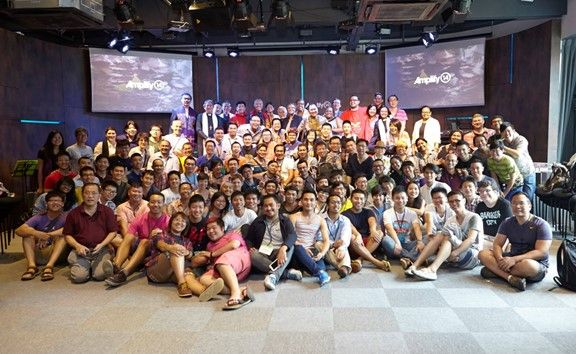
The FCC is housed in an inconspicuous industrial building in west-central Singapore, and holds services in a conference room outfitted with several large LED screens and projectors. In operation since 2003, FCC was founded by gay and lesbian Singaporean Christians after they experienced discrimination at other churches.
Siew, who studied Divinity at the Pacific School of Religion in California, has been part of the FCC since its inception. As reverend, he considers himself responsible for speaking publicly about what he views as unjust and repressive actions by the state. In April, when the government hanged an intellectually disabled man, Nagaenthran Dharmalingam, for trafficking 1.5 ounces of heroin, Siew delivered a speech at Hong Lim Park in which he asked, “What kind of society will we become when we are more compassionate, more merciful, more human?”
For those who attend services at the FCC, the word “free” in the church’s name has a second meaning: It is an acronym for First Realize Everyone’s Equal. And for many congregants, that is precisely the church’s appeal.
SL is a 44-year-old public servant and FCC congregant who asked to be identified by only her initials, as she isn’t “confident” that the government will be lenient with employees who publicly acknowledge their homosexuality. She said that Siew’s church had helped her in profound ways. The FCC, she said, “allows us to heal the wounds that we received from rejections by others.” She also noted that Siew’s strength is his commitment to “fight for the rights of the last, the lost and the least.”
But many in Singapore disagree. Critics, who have attacked both the reverend and the broader congregation, have said the FCC is not a true church, as it promotes an agenda beyond Jesus Christ.
Siew, by contrast, hopes that the FCC is in some way an answer to what he sees as a declining sense of purpose at some religious institutions.
“The churches, in many places, have lost their relevance when it stopped speaking up and it became a place of privilege and power,” he told OZY. Noting that too often, churches view baptism as their “key performance indicator,” he said this fosters a view in which baptism is the finish line. Instead, he sees baptism as the beginning of a journey, and hopes that congregants become agents of change and a blessing to others.
Joseph Lim, a ministry staff member at a nearby Methodist congregation, has called the FCC a “cult.” Lim did not respond to OZY’s request for additional comment.
Meanwhile, a spate of executions in Singapore has drawn international scrutiny as well as rare local protests. Siew has noted that a majority of those who have been executed were poor and dark-skinned.
Responsible and Balanced
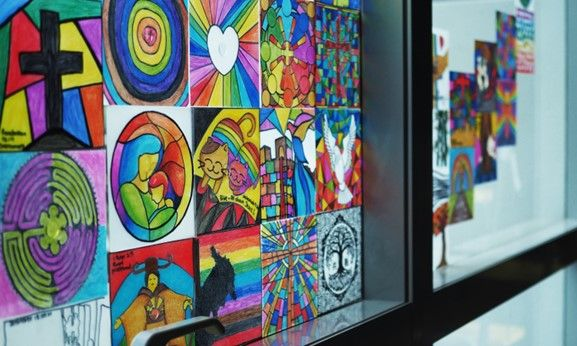
When people walk into church, said Siew, they are carrying their whole life with them: their struggles for work, survival and acceptance. He said the aim of the FCC is to make people feel safe. As that happens, congregants are able to become more involved in larger causes and what he described as “helping to shape the world into a more loving and justice-oriented society.”
This year, at a public event, when he said that the predominant cause of suicide and self-harm among LGBTQ people is the discrimination they face, a psychiatrist called this claim “unnecessary and immensely unhelpful,” adding that it was tantamount to casting blame.
Siew’s outspoken ways have not gone unnoticed by the government. After Singapore announced the repeal of Section 377A (a law that banned gay sex), effectively making it legal to be homosexual, Siew wrote on Facebook that the announcement had made it easier for “us” to speak about LGBTQ topics “live on air.”
Intervening immediately, Singapore’s Ministry of Communications and Information said it was of the “utmost importance” that mainstream media continue to be “responsible and balanced” in handling LGBTQ topics.
Soon after that statement, Siew’s interview on a state radio station was cancelled. Siew called this a part of the “systemic erasure and silencing of our voices” so that “people don’t hear the stories” that will help them understand.
COMMUNITY CENTER
What kinds of issues are appropriate or inappropriate for a reverend to speak about?
Pregnant women caught in Pakistan’s floods left struggling for maternal healthcare
Posted on: November 19, 2022
Some 650,000 pregnant women in flood-hit provinces are affected by maternal malnutrition, with about
2,000 mothers a day giving birth in unsafe conditions
Unregulated use of medicines, untrained birth attendants, lack of access to health facilities and hospitals
among problems post-floods
By Sonia Sarkar
November 13, 2022
Pakistani health worker Mai Janat Buriro, 37, spends three hours every day handing out medicines to pregnant women with iron deficiency or malnutrition in the flood-affected province of Sindh.
Of the 11 mothers who gave birth last month in her neighbourhood in the Allah Rakha colony, three who suffered from maternal malnutrition lost their infants.
“Most pregnant women have nothing to eat,” Buriro told This Week In Asia. “They don’t have access to milk either because animals they reared had died in the floods.”
Over the past several months, devastating floods have killed more than 1,500 people and displaced 7.6 million people.
Health experts have said that maternal healthcare in the country – long plagued by the rampant use of unregulated medicines, heavy dependence on untrained childbirth attendants and poor antenatal and postnatal care in the backward areas of these provinces – has worsened after the floods.
Unregulated use of medicines
Neha Mankani, founder of Karachi-based non-profit Mama Baby Fund which provides essential medical services to mothers and babies, last month claimed on Twitter that untrained birth attendants in Pakistan used the veterinary drug oxytocin to augment labour during childbirth.
Mankani told This Week in Asia that this had “happened in many places for many years” because of “lack of regulation” of both drugs and untrained childbirth attendants.
This lack of strict regulation has led to “irrational and unregulated” use of medicines, and “sometimes, veterinary medicines are used in humans, and vice versa”, according Zafar Mirza, a former special assistant to the prime minister on health.
Lahore General Hospital’s medical officer Alia Haider said pregnant women in remote areas of Balochistan were largely dependent on untrained birth attendants, who could use veterinary oxytocin without any due supervision.

The non-profit Human Development Foundation said many pregnant women in Sindh province turned to untrained childbirth attendants because local facilities were non-operational and government hospitals were either too far away or inaccessible without prior connections with doctors. Photo: Mazhar Abbasi
According to a 2016 study, oxytocin, which is manufactured for humans, is given in an unregulated manner by untrained birth attendants. The study said of 6,379 women respondents, 607 (9.5 per cent) received labour-inducing medication before reaching hospital, and of the 607 women, 528 (87 per cent) received unregulated medication. Of 528 women, 94.5 per cent received oxytocin injections.
Sexual and reproductive health specialist Syed Rizwan Ali said untrained birth attendants, who have been masquerading as health workers and midwives in flood-hit areas, barely checked the expiry dates of oxytocin or syntocinon injections before administering them.
Ali visited flood-hit Balochistan and Sindh in October and found that no drug inspectors were on hand to check for medical malpractice.
Bushra Arain, chairperson of All Pakistan Lady Health Workers Association, said Sindh’s local feudal leaders – who have a political stronghold – also helped some untrained birth attendants to operate. Arain said that despite making police complaints, no action has been taken against the untrained birth attendants.
Mazhar Mehmood Abbasi of the non-profit Human Development Foundation, which advocates social change in Pakistan, said many pregnant women in Sindh’s Rind Wahi turned to untrained childbirth attendants because local facilities for institutional deliveries were non-operational while government hospitals were either too far away or inaccessible without prior connections with doctors.
Pregnant women in Balochistan’s Dera Allah Yar travelled for two hours to Larkana in Sindh on flood-ravaged roads to give birth at a tertiary hospital, Haider said, adding that some “suffered excessive bleeding because of the stressful journey”.
United Nations Population Fund data showed that as of September 2022, 1,946 health facilities largely in the Sindh and Balochistan provinces had been partially or fully damaged. The lack of services meant that “community midwives”, who are trained in assisting childbirth, stepped in to fill the gaps, said Zeba Sathar, Pakistan director of US-based non-profit Population Council.
1
The trend of underage marriages in Pakistan adds to the woes affecting flood-hit areas. According to UNICEF, 21 per cent of Pakistani girls marry before the age of 18, and three per cent before they turn 15.
Sexual and reproductive health specialist Syed Rizwan Ali said untrained birth attendants, who have been masquerading as health workers and midwives in flood-hit areas, barely checked the expiry dates of oxytocin or syntocinon injections before administering them.
Ali visited flood-hit Balochistan and Sindh in October and found that no drug inspectors were on hand to check for medical malpractice.
Bushra Arain, chairperson of All Pakistan Lady Health Workers Association, said Sindh’s local feudal leaders – who have a political stronghold – also helped some untrained birth attendants to operate. Arain said that despite making police complaints, no action has been taken against the untrained birth attendants.
Maternal Mortality
Before the floods in 2019, Pakistan’s maternal mortality ratio stood at 186 per 100,000 live births with rates of 224 and 298 in flood-hit Sindh and Balochistan, respectively.
According to Mirza, an adviser to the World Health Organization on universal health coverage, oxytocin is given to pregnant women to prevent post-partum haemorrhage during childbirth and requires specific conditions – between 2 and 8 degrees Celsius – for storage.
The drug becomes “ineffective” if the storage conditions are not maintained during the supply chain, which is a common problem in Pakistan, thereby causing women to continue bleeding despite being administered with it.
In 2019, more than 41 per cent of maternal deaths occurred due to obstetric haemorrhage.
The trend of underage marriages in Pakistan adds to the woes affecting flood-hit areas. According to Unicef, 21 per cent of Pakistani girls marry before the age of 18, and three per cent before they turn 15.

Mazhar Abbasi inspecting health conditions of women and children in flood affected Sindh. Photo: Mazhar Abbasi
Saima Bashir, senior research demographer at Pakistan Institute of Development Economics, said young women such as underage mothers and minor girls in flood-hit rural areas became pregnant soon after marriage and often did not have access to contraceptives. Nationally, only 34 per cent of married women aged 15-49 use contraceptives.
A 2017 study showed that of an estimated 10.1 million pregnancies, 37 per cent are unintended while 2.5 million children are acutely malnourished. In Pakistan, 2.5 million children are currently acutely malnourished.
Bashir feared that underage marriages, unintended pregnancies, maternal mortality rate and number of malnourished children would rise in flood-affected areas.
Mirza urged local authorities in flood-hit areas to routinely identify and register pregnant women to monitor them at every stage of pregnancy. Authorities should also facilitate eight regular antenatal visits by healthcare workers to ensure pregnant women get their ultrasounds done, and receive tetanus toxoid injections and a steady supply of iron and folic acid tablets.
“Planning their childbirth under trained hands is essential besides postnatal care of the mother and child,” Mirza said.
— Sonia Sarkar in Jaffna, Sri Lanka
‘I Have No Option but to give in’
Thiyash Muralitharan* was once a promising athlete in Jaffna, capital of Sri Lanka’s Tamil-dominated Northern Province. Today, the 25-year-old is among a fast-growing band of young people who are embroiled in a dangerous new crisis.
Eight years ago, Muralitharan had won several intercollegiate long jump medals, and his sports career appeared poised for a leap to the national stage. Then a friend at the local college offered the young athlete a marijuana joint — ostensibly, to help boost his stamina. Before he knew it, Muralitharan was skipping visits to the sports grounds and instead rushing to a nearby fishermen’s village to buy cannabis. He eventually started using heroin too, and now he cannot spend a day without snorting it.
“I feel normal only when I sniff heroin,” he told OZY. “I become violent when I don’t.”
His mother, Murugan Sudarshini, who sells local delicacies at a streetside stall, has had to bear the brunt of his anger.
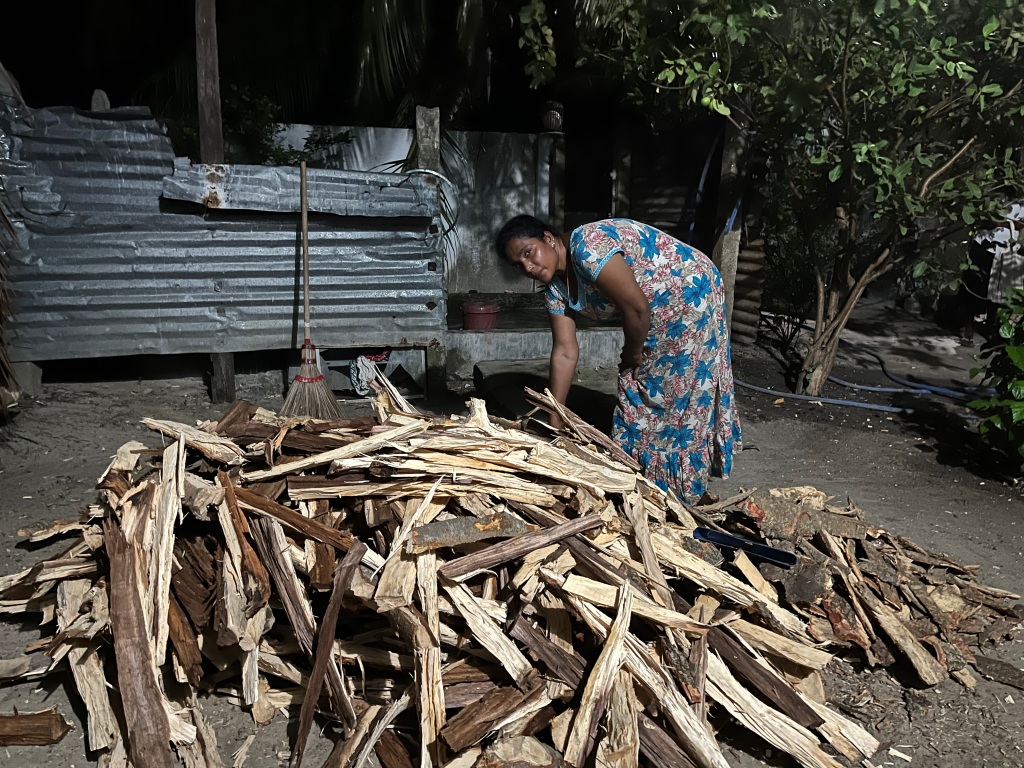
Murugan Sudarshini at her home
“Earlier, I used to keep cash away from him so that he wouldn’t be able to buy drugs, but he physically assaulted me a few times when I refused to pay,” said Sudarshini, who now often ends up giving Muralitharan 1,500 Sri Lankan rupees (about $4) to buy a gram of heroin. “I have no option but to give in.”
Muralitharan’s addiction reflects a deeper challenge. The Northern Province, which witnessed a 26-year civil war — between the Sri Lankan army and the Tamil rebel group Liberation Tigers of Tamil Eelam — that killed over 100,000 people, is struggling with drug abuse. As per the latest government data, in 2019, the province recorded 12,139 cannabis users and 728 heroin users, as compared to 7,608 cannabis users and 487 heroin users in 2018.
These regional numbers are just a fraction of Sri Lanka’s national numbers, which show that an estimated 301,898 people smoke cannabis while 92,540 use heroin. Overall, about 2.5% of the national population above the age of 14 consumes narcotics either regularly or occasionally. But what’s worrying about the Northern Province is that it traditionally had lower drug use rates than other parts of the country, yet witnessed a dramatic 59% year-on-year increase in cannabis users and a 49% rise in heroin users between 2018 and 2019. And while there’s no data from the past two years yet, signs on the ground point to a deepening crisis.
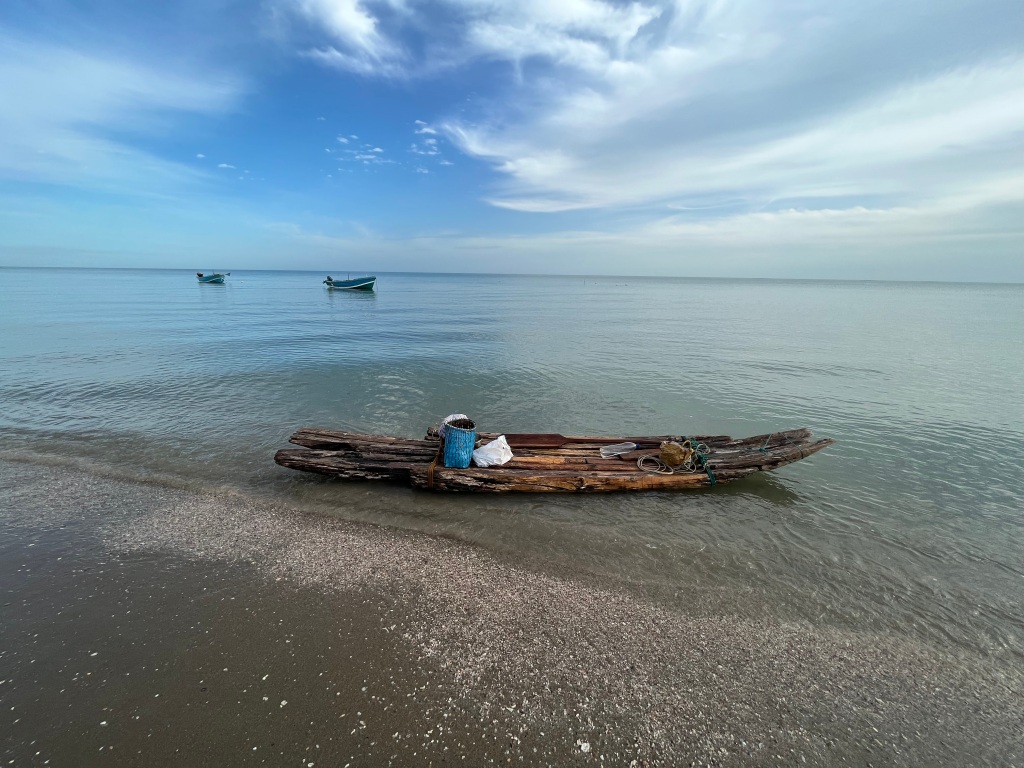
Karainagar beach in Jaffna, Sri Lanka
Mid-Sea High
Apart from cannabis and heroin, methamphetamine lands in Sri Lanka’s north via the Palk Strait, the narrow strip of water separating the country from India, according to a police official who spoke on the condition of anonymity. Coastal areas, including Jaffna, Mannar and Vavuniya, are major drug trafficking hubs in the north.
Kandasami Rajachandran, president of the Ambal Fishermen’s Cooperative in Jaffna’s Karainagar, told OZY that Indian fishermen and traffickers who arrive in boats and trawlers bring these drugs halfway across the Palk Strait, where they pass them on to Sri Lankan fishermen and drug traffickers in the middle of the sea.
Rajachandran said that when the Sri Lankan navy chases local traffickers, they dump packets stuffed with the drugs into the sea. The traffickers “trace them later with the help of GPS trackers attached to the drug packets,” he added.
Sri Lankan police spokesperson Nihal Thalduwa confirmed to OZY that traffickers get the drugs through a mid-sea transfer. But he clarified that not all the traffickers are fishermen.
According to the Handbook of Drug Abuse Information 2021 released by the Sri Lankan Ministry of Defense, 97,416 persons were arrested for drug-related offenses in 2020. Of these, 11,690 are from the Northern Province. That’s 12% of total arrests even though the province accounts only for 5% of the national population.
Thalduwa said that several factors, such as shallow waters, long coastal stretches and numerous fishing boats densely parked close to the sea, make these transactions across the Palk Strait hard to stop. “Traffickers have the opportunity to park their boats in the beaches in several sparsely populated areas of the north without anyone noticing them,” he said.
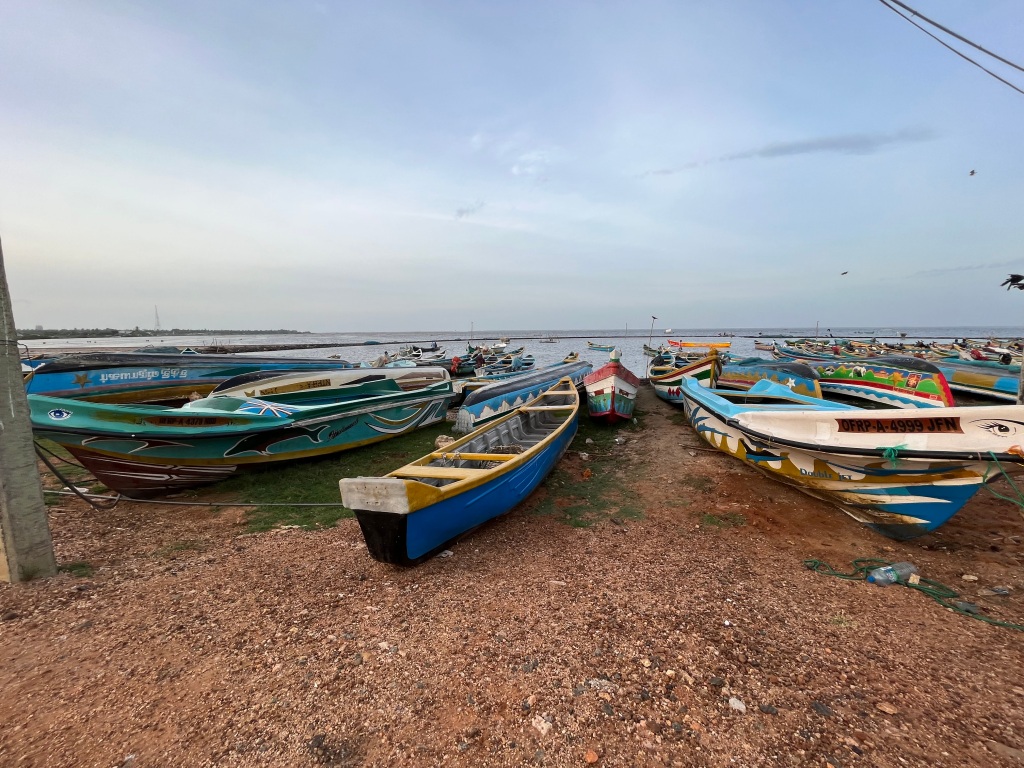
Jaffna
After arriving on shore, the drugs reach schools and colleges, targeting young men. Media reports suggest that ice cream vendors often sell mava, an areca nut-based drug in the form of chewing gum, to school children. Thalduwa said that police raids have found some fast-food joints and stationery shops adjacent to schools also selling mava.
M Jeyarasa, a mental health officer at the Kilinochchi district hospital, which is about 70 kilometers (43 miles) away from Jaffna, told OZY that, while alcoholism among youth was once the biggest concern of many families, more and more parents have started complaining about drug abuse among their children. “Often, school principals and teachers seek help for their students,” Jeyarasa said. Last year, a school teacher in Jaffna was assaulted by a group of students when he criticized their alleged drug abuse.
Over 300 people have been identified as drug addicts over the past three years in the state-run drug de-addiction clinic at Kilinochchi, Jeyarasa added.
Rev. Vincent Patrick, the director of a Jaffna-based de-addiction and rehabilitation center run by a Catholic nonprofit, Change Charity Trust, told OZY that at least 15 young men in the age group of 16-27 years are undergoing treatment there at any given point. “Many are from educated families,” Patrick, also an anthropologist, said. “They start taking drugs because it’s a fad.”
Sajith, a 24-year-old computer engineer who spent over two months at Patrick’s de-addiction center in Jaffna, told OZY that he first took to marijuana because he felt it made him “creative.” In March, he started taking methamphetamine as an alternative to Ritalin — an imported medicine he used previously to treat his attention-deficit/hyperactivity disorder — which became unobtainable during Sri Lanka’s economic crisis. “Meth helped me stay focused but then I realized that I was becoming violent if I didn’t take it. That’s when I sought help,” Sajith told OZY.
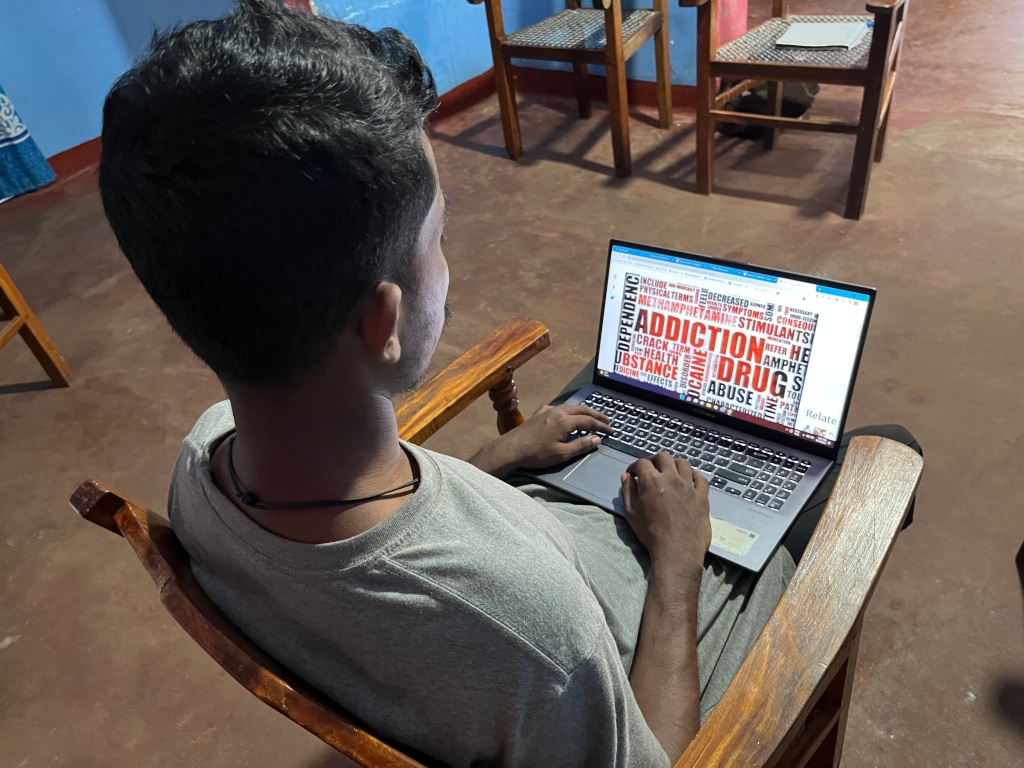
Sajith at the de-addiction centre in Jaffna
Broken Families
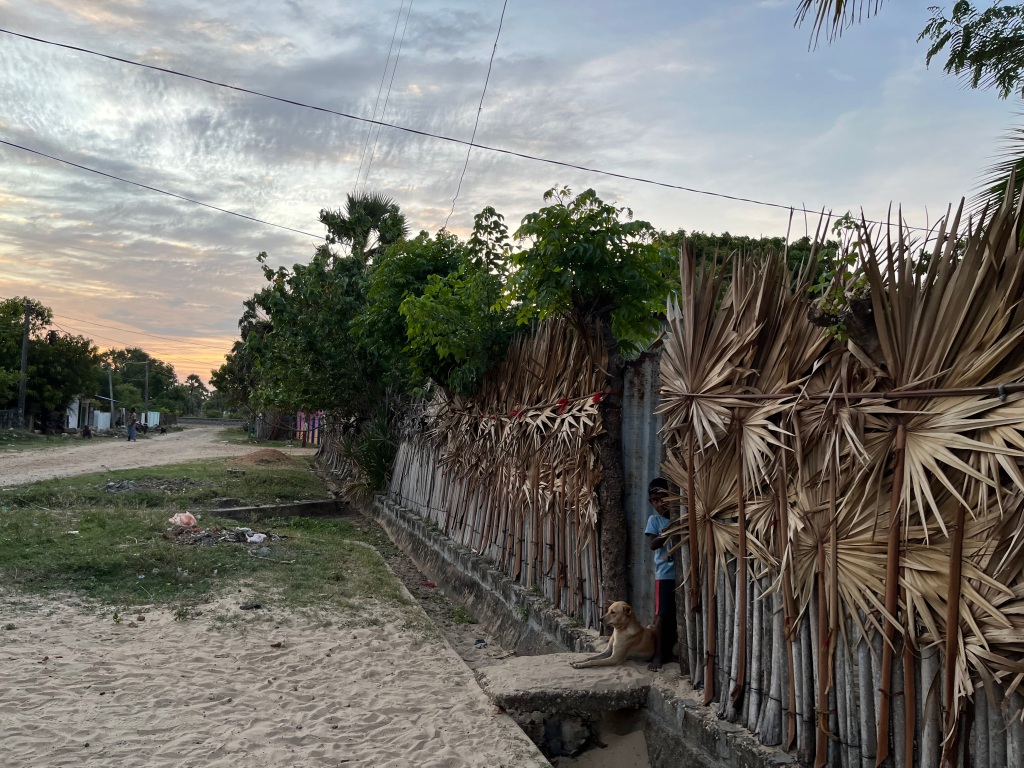
Jenushen’s neighbourhood in Navatkuli in Jaffna
Kevin Jenushen*, a 20-year-old daily wage earner who regularly uses both cannabis and heroin, remained unsupervised in his early teens because his mother, a single parent of three children and nursing assistant at a local government hospital, was busy at work. Jenushen got addicted to heroin three years ago when he was working as a fisherman — he wanted to earn to support his family — while attending college. He eventually dropped out. “Some of my college friends also got addicted to drugs while they went to the sea for fishing,” Jenushen told OZY.
Jenushen’s story is sadly common. Sypherion Thileepan, director of Shanthiham, a nonprofit that provides counseling and skills training to war-affected families, told OZY that in many families in the north, mothers are the primary breadwinners because men either disappeared or were killed during the war. That leaves children with less parental supervision, and more vulnerability.
Ambiga Sritharan, director of the Jaffna-based nonprofit Law and Human Rights Centre, which provides pro bono legal assistance to families of war victims, said that post-war trauma also left many families “dysfunctional,” pushing adolescents toward addictive substances.
But Thalduwa claimed that the police’s awareness programs in schools and colleges, aimed at preventing youth drug abuse, have helped.
Meanwhile, Sudarshini has convinced her son Muralitharan to visit Patrick’s de-addiction center. She has also convinced him to go to a nearby sports field every evening.
“I cannot do long jumps anymore, but I love to play cricket,” Muralitharan said. “My body, however, has lost the strength that a sportsperson needs.”
*Some names have been changed at the request of people who spoke with OZY but wanted anonymity. Link: https://www.ozy.com/pg/newsletter/the-daily-dose
Published on 27 October 2022.
Playing for lives: Indian state bans online gaming over addiction fears but industry cries foul
Posted on: October 27, 2022
Tamil Nadu’s ban on online games like rummy, poker will only benefit fly-by-night and illegal market operators who encourage illicit activities, says gaming federation chief
Creating awareness about game addiction, taking preventive measures would be more effective than imposing a ban, analysts say
The Indian Supreme Court has held that rummy is preponderantly a game of skill and not of chance. Photo: Shutterstock
Last year, a 45-year-old homemaker in the south Indian city of Chennai played rummy online for the first time. Placing a small bet, she was pleasantly surprised to win 500 Indian rupees (US$6) from just a 20-minute mobile game.
Feeling encouraged, she started a new game, and from then on, she began playing for six hours every day, placing higher stakes – 500 Indian rupees – for bigger returns. When she exhausted her money, she borrowed from different loan apps and her relatives. By September, she had lost over 1.8 million Indian rupees (US$21,760).
“When her relatives asked her to repay the loans they gave her, she consumed poison in an attempt to kill herself in sheer helplessness,” Chennai-based psychiatrist Lakshmi Vijaykumar, who prescribed antidepressants for the game addict, told This Week In Asia.
Elsewhere in south India, seven Tamil Nadu residents reportedly died by suicide this year following huge financial losses linked allegedly to online gaming. The deaths prompted the state earlier in October to ban online games of chance, such as poker and rummy, as well as online gambling. Those who flout the rules face jail, fines of 5,000 rupees (US$60) or both.
The gaming industry plans to challenge the ban, claiming many gamers use virtual private networks to access the games, making it difficult for the crackdown to be effective.
“The ban would only benefit fly-by-night and illegitimate market operators who encourage illicit gaming activities,” said Sameer Barde, CEO of Mumbai-based E-Gaming Federation, a non-profit that provides operating standards to its eight operator-members to self-regulate the Indian e-gaming sector and safeguard players’ interests.
Barde said an estimated 80 million Indians play rummy online, and that the Indian Supreme Court has held that rummy is preponderantly a game of skill and not of chance. Barde said he would challenge the ban because rummy is protected under Article 19(1)(g) of the Indian Constitution.
A person who plays a game of chance wins or loses by sheer luck, while one must use knowledge and expertise to win a game of skill.
Games of chance – essentially gambling – are illegal in India except a few states including Goa, Barde said, but games of skill are legal even if played for real money.
Vijaykumar, who was part of a Tamil Nadu four-member committee headed by retired judge K Chandru to study the effects of online gaming, said online games of chance, including rummy and poker, were major causes of suicides in the state.
In 2021, Tamil Nadu ranked second in the country in terms of the number of suicides (18,925) after the western state Maharashtra of (22,207). Nationally, bankruptcy is one of the reasons for suicide besides addiction and unemployment, according to the National Crime Records Bureau.
A June report by US-based Sensor Tower, a leading mobile app ecosystem data provider, said the Indian market had the highest number of monthly downloaded games in the world, followed by the United States and Brazil.
The Indian gaming market, valued at US$1.02 billion in 2020, is expected to reach US$4.88 billion by 2026.
Experts said the cheap 4G internet connection and increasing number of smartphone users were the main reasons behind the industry’s growth, with RummyCircle, Rummy Passion and PokerBaazi as its key players.
The Indian Cellular and Electronics Association – the apex body of the mobile and electronics industry – and consulting firm KPMG had predicted in 2020 smartphone users in India would rise to 820 million by this year. There are about 750 million smartphone users now.
Growing at a compound annual growth rate of 38 per cent, Barde said the 15-year-old online gaming sector in India held significant potential for overall “economic growth and employment opportunities”.
Chandru, however, justified the ban, saying there would be a “sense of fear among people” about taking part in games of chance now that they were illegal in Tamil Nadu.
But Unmesh Joshi, co-founder of Mumbai-based non-profit Responsible Netism, which promotes cyber wellness, said creating awareness about game addiction was essential as a ban alone would not help and many gamers engaged in criminal activities to fund their addiction.
“Many pro gamers also create content on video sharing sites to guide other gamers, and get paid by these sites. Often, they lend money to addicts who play for higher stakes,” Joshi said.
When people start losing money in the game, unsolicited advertisements on gaming sites direct them to loan apps which push them to lose thousands of rupees, according to Chandru.
Tamil Nadu’s new law will penalise people for putting up ads on the banned games.
Creating awareness about game addiction is essential, says Unmesh Joshi, co-founder of Mumbai-based non-profit Responsible Netism. Photo: Shutterstock
But Barde said instead of imposing a ban, the “state must regulate operators” to ensure they do mandatory identity verification to prevent underage gamers from playing real-money games. Operators must also keep gamers’ financial details safe and offer features such as daily spending limits and restricting play for certain periods, he added.
In the past five years, six states including Telangana, Odisha and Nagaland banned online gaming but illegal operators continue to operate.
In 2020, police arrested a Chinese national in Telangana for running online gaming and betting activities worth millions of rupees.
Chandru urged the Indian government to enact a national legislation as only then “an effective ban can be enforced”.
The government, however, was “committed” to start-ups in every aspect of the digital economy including gaming, Rajeev Chandrasekhar, minister of state for electronics and information technology, said in June.
Published in South China Morning Post. October 24, 2022: https://www.scmp.com/week-asia/politics/article/3197090/playing-lives-indian-state-bans-online-gaming-over-addiction-fears-industry-cries-foul
The picturesque Galle Face Green overlooking the Indian Ocean from Sri Lanka’s capital, Colombo, was the epicenter of the “Janatha Aragalaya” — which means “people’s struggle” in the Sinhalese language — that shook the nation earlier this year and forced then-President Gotabaya Rajapaksa to flee. Now, the site is deserted. The tents that housed protesters — teachers, students, lawyers, health workers, farmers, fishermen, trade unionists, transporters and entrepreneurs — since April 9 were demolished last month by security forces soon after former Prime Minister Ranil Wickremesinghe took charge as president of this debt-ridden island nation of 21.6 million people.
But Wickremesinghe is seen by many as an ally of the Rajapaksa family that ruled Sri Lanka for most of the past two decades: Gotabaya’s brother, Mahinda Rajapaksa, who was prime minister under him, served as president from 2005 to 2015. Inflation is at 60%, with severe shortages of fuel, food, medicines and electricity. And protesters are clear: Their struggle isn’t over yet. OZY reports from Sri Lanka on what’s next for the popular uprising, those who participated in it, and the country they hope to change.
– with reporting by Sonia Sarkar from Sri Lanka
If not now, then when?
At Galle Face Green, the embers of the protest that unseated the Rajapaksas are still visible.
Hundreds of pairs of shoes of protesters, who were allegedly assaulted by police, have been piled up together. Boards reading “Let’s build up a country without enforced disappearances” and “We are our own leaders” stand firmly on the green grass. Public walls are filled with slogans such as “Power To The People Beyond Parliament” and “Ranil Go Home.”
“After police picked up protesters randomly, people are cautious before assembling again for the protests,” 28-year-old Colombo-based civil engineer Nuzly Hameem, who participated in the protests, told OZY. “But that doesn’t mean that people are happy with the current regime. This silence is only a lull before the storm.”
In April, on the way to his office a little over a mile from Galle Face Green, Hameem came across hundreds of tuk-tuk drivers sleeping on the pavement while they queued up for days in front of fuel stations. At home, Hameem faced power cuts for 13 hours a day, and the prices for essential food items skyrocketed as well. “It became worse and worse. People realized that if we don’t protest now, then when,” said Hameem.
At Galle Face Green, ordinary citizens shouted “Go Gota Go” for months, leading up to Rajapaksa leaving the country. Wickremesinghe, the former prime minister, was then elected as president not by the people but by parliamentarians, even though he lost the last election and his party has no members of its own in parliament.
Thisara Anuruddha Bandara, 28, who was arrested twice since April on charges of promoting “feelings of disaffection” toward the state and obstructing the entrance of the presidential secretariat, told OZY that the goal is to “unseat” all who protect the “corrupt system.” About one in every four Sri Lankans is between 15 and 29 years old, the demographic that formed the backbone of the anti-government protests.
But do they have a roadmap ahead?
President Wickremesinghe has held talks with a handful of protesters to discuss the future. Vimukthi Dushantha, whose Black Cap Movement withdrew from the protests soon after Wickremesinghe took power, is among those who have participated. Wickremasinghe has used a state of emergency and anti-terrorism laws to crack down on protesters. The Black Cap Movement wants these crackdowns ended in order to “create space for participation of citizens in the legislature in the next six months,” Dushantha said in an interview with OZY. “We want elections soon after these reforms.”
But Bandara doesn’t think Wickremesinghe has any intentions to bring any “reforms,” given his “military approach” towards protesters. Police, who enjoy sweeping powers to make arrests under emergency laws, have randomly picked up protesters and framed them on terrorism charges. Wickremesinghe’s brutal clampdown on dissent has been criticized by the European Union as well.
What protesters want is a Sri Lankan parliament that better reflects the country. The average age of lawmakers is 53, while the median age of the population is almost 20 years younger. Climate change activist Maleesha Gunawardana said to OZY that the nation needs more women in the parliament who will work for the future generation. Currently only 12 out of Sri Lanka’s 225 national lawmakers are women.
The protests were largely driven by ordinary citizens without political affiliation. But the National People’s Power (NPP), a coalition of over 27 opposition parties, worker unions and women’s rights groups led by Janatha Vimukti Peramuna (JVP) and its breakaway faction, Frontline Socialist Party (FSP), organized several rallies since March. Rev. Nandana Manatunga, head of the Catholic nonprofit Human Rights Office, told OZY that, ideally, there should be a “strong coalition of the opposition” but that will be a “bit difficult” because of the government’s repressive measures. “The government may launch a crackdown on the opposition too, just the way it is punishing the activists,” Manatunga said.
Meanwhile, Hameem believes that an “early” election is a must to get rid of government repression. What’s needed, he said, is a more “educated” cohort of parliamentarians — at least 100 new faces — unlike the current set of legislators whose educational qualifications are shrouded in opacity. “Change may not come in the first five years, but it will eventually come in their second or third term,” said Hameem.
Dushantha, who said he will not contest the elections, wants “representation from every section” in the parliament, which currently only has people with “connections.”
Sociologist Kalinga Tudor Silva is hopeful that some of the protesters could turn out to be “efficient and accountable politicians” in the future. According to Silva, protesters are likely to form “multiple parties” because they have “different” political ideologies, but the existing political parties and politicians, including Wickremesinghe, eventually must “facilitate their passage to politics.”
“They must understand: If these protesters can get rid of the two most powerful people — Gotabaya and Mahinda — they can get rid of anyone,” Silva said.
Past and future
Sri Lanka has a history of political protesters turning to mainstream politics. In 1971, and then between 1987 and 1989, the JVP, which swears by socialism and was once a rebel outfit, led major movements driven by marginalized and unemployed rural youths who raised issues pertaining to unemployment, widening economic inequalities and poverty.
In 1979, the JVP, which once received armed support from North Korea, contested the Colombo municipal council elections for the first time. Although it didn’t win, the JVP emerged as the third-largest political party in the city. Twenty-five years later, the JVP won 39 seats in the parliament, and now, under the NPP coalition, it has three lawmakers, including its chief, Anura Kumara Dissanayake, who was in the race for the presidency after Gotabaya Rajapaksa resigned.
Stressing that the parliamentary elections must take place by March of next year, Karmegam Dineshkumar, a member of JVP’s youth wing, the Socialist Youth Union, told OZY that its group would encourage young protesters who want to do politics “ethically” to contest the polls.
But will a new parliament — even if protesters participate in the next election — reflect the uncharacteristic unity that the Janatha Aragalaya brought about between different religious and ethnic communities in a country that witnessed a 26-year civil war between Tamil rebels and a Sinhala-dominated government? “Despite differences in the past, all communities came together to save the country from the corrupt politicians,” Gunawardana said. “We hope to see such unity in the parliament.”
Tamil filmmaker Nadaraja Manivanan, who participated in the Colombo protests, said these protests helped Tamils begin conversations with Sinhalese Buddhists about political justice and human rights violations by the army. “This was the turning point, not only to uproot a corrupt government but also chart a path for unity,” he said.
This year, on May 18, hundreds of citizens, including Sinhalese Buddhists in Colombo, mourned the 2009 killings of Tamil civilians in the last war that the army fought with guerrillas at Mullivaikkal in Northern Province. Colombo had traditionally celebrated the occasion as “Victory Day” for defeating Tamil militants.
But Mahendran Thiruvarangan, a senior lecturer in English at University of Jaffna — the largest city in Sri Lanka’s Tamil north — suggested that, apart from such public displays, unity between Tamils and Sinhalas remains fragile. There were still “no strong demands for political justice” for Tamils from Sinhala protesters, he said. And an active Tamil nationalist lobby in the north that generally “mobilizes” locals to protest against “state oppression” either chose to “remain silent” or discouraged anti-government protests in solidarity with the south, he told OZY.
Still, back in Colombo, Hameem is cautiously hopeful. The protesters, he said, must continue to create “political awareness” among people until the next elections so they can “vote the right politicians to power.”
Community Center
Is a protest movement most effective when it pressures elected leaders from the outside, or should protesters themselves seek office to change what’s wrong?
Published in OZY on August 26, 2022 https://www.ozy.com/pg/newsletter/the-daily-dose/450449/
The Loneliest Job in the World
Posted on: October 1, 2022
By Sonia Sarkar
“What’s in a name?” Juliet famously asked in the Shakespeare classic. Plenty, it turns out, when it comes to unconventional-sounding government departments that seem to be surfacing around the world in recent years. Today, OZY takes a look at some of the more offbeat government jobs — from Japan’s minister of loneliness, to the Taliban’s minister of virtue — to figure out what they’re really about, and whether they were created merely for political reasons or for genuine public good.
A cup to set the economy racing
Let’s brew some coffee
Last month, Papua New Guinea — an island nation in the southwestern Pacific Ocean known for its white sandy beaches, coral reefs and active volcanoes — launched the a Ministry of Coffee. The country’s earthy coffee is its second-largest agricultural export after palm oil, accounting for 6% of the national gross domestic product. With more than 85% of the population living in poverty, the new coffee minister, Joe Kuli, wants to use the industry to bring in more export revenue. The classic sweetness of the country’s coffee, complemented by an exotic, complex and fruity aroma, has won over many coffee aficionados across Australia, Japan and the U.S. The rest of the world could be next.
Kiwis love racing
There is an old saying in New Zealand that “racing, rugby, and beer” are the favorite hobbies of its people. Hence, they now have a new ministry for the $1.6 billion racing industry, which employs over 50,000 people as trainers, breeders and owners. Racing minister Kieran McAnulty has said that the industry contributes as much to the New Zealand economy as fishing. But with recent scandals over drugging horses and animal cruelty, there’s also a mounting backlash from animal rights groups seeking restrictions — or even an outright ban — on greyhound racing.
Health is wealth
Holding hands of the lonely
Describing loneliness as a “real and diagnosable scourge,” the U.K. in 2018 established a separate ministry to deal with it. A year earlier, a study stated that 9 million Britons (14% of the population) suffer from loneliness. As loneliness became a major cause of concern during the pandemic, the U.K. government launched a chatbot service on WhatsApp to connect with lonely people.
Meanwhile, another nation across the world is grappling with the same challenge.
Although 28% of Japanese people are over the age of 65 — the oldest population in the world — the government in Tokyo last year appointed a minister of loneliness to tackle the issue of increasing suicides (especially among women) and alleviate social isolation among younger people. The ministry aims to deal with the mental health crisis of people furloughed from their jobs or those who feel isolated.
Vickie Skorji, the director of Japanese nonprofit TELL, which helps people with mental illness, told OZY that many COVD-19 restrictions “exacerbated feelings of isolation and loneliness and increased mental health issues.” Skorji said that the Ministry of Loneliness funded new initiatives to reach those who are lonely and feeling suicidal, particularly the younger generation. In June, the National Police Agency stated the suicide rate had dropped by 3.7% and such initiatives had helped save 338 lives.
Flush it with style!
There’s one place, though, where you want to be lonely: the toilet. Doctors say a good poo in the morning is an indication of good health too. And Japan takes this morning chore very seriously. It has created a separate toilet ministry to improve and beautify public bathrooms. It’s no secret, of course, that Japan pays special attention to its toilets that are famous for their high-tech offerings — from self-raising toilet seat-lids activated by a motion sensor and pulsating water sprays to a range of dials, levers, and buttons, almost like a fighter jet cockpit. Japan also presents “Toilet Awards Japan” to municipalities and businesses for promoting clean, safe and comfortable public toilets.
Bend it like an Indian!
With an emphasis on yoga and ayurveda — a traditional form of Indian medicine — India’s Hindu nationalist Prime Minister Narendra Modi, in 2014, converted what was a department under the country’s health ministry and gave it the powers of an autonomous ministry. It’s called the AYUSH ministry — the acronym standing for ayurveda, yoga and naturopathy, unani, siddha and homeopathy.
But according to political analyst Nilanjan Mukhopadhyay, the “thrust” of the Modi government’s efforts has been to promote yoga and ayurveda, which have “Hindu connotations.” By contrast, little has been done to raise the profiles of unani, a form of medicine introduced in India by Arab and Persian settlers, and siddha, another medicine system traditionally linked with southern India. “Unani and siddha don’t fall into a very comfortable political zone of being labeled as India’s heritage as far as this government is concerned,” Mukhopadhyay told OZY.
In 2014, on his first visit to the United Nations General Assembly, Modi even urged member states to declare June 21 as International Day of Yoga. His pitch worked, but in 2015, the AYUSH ministry chose not to invite or select Muslims to serve as trainers abroad for yoga day. Modi’s political intent is to present India’s rich and diverse heritage as “exclusively Hindu,” Mukhopadhyay said. Yoga has been an easy diplomatic sell, because it already had a huge following in the West.
“Though Modi espouses unity through yoga, he has arguably been one of the most divisive Indian leaders in recent memory,” Anusha Kedhar, associate professor at University of California, Riverside, argued in a 2020 essay. “Modi’s yoga agenda has further entrenched the binary of the tolerant, ‘civilized’ Hindu and the intolerant, ‘irrational’ Muslim other.”
Pure politics
To preserve our own
Modi’s tryst with yoga might still yield some public good if more people take to the practice. Meanwhile, Bolivia, the South American country with the largest proportion of Indigenous people, has set up a Ministry of Cultures, Decolonization and Depatriarchalization. The idea is to preserve and protect the cultures and artistic expressions of Indigenous communities and descendants of slaves brought from Africa, and to “reverse” inequality and racism. The ministry claims it has taken disciplinary action against police officers for acts of racism and discrimination.
However, “no people have been brought to justice for racism so far,” Bolivian sociologist Pablo Mamani Ramirez told OZY, adding though that it’s very difficult to talk so soon about the ministry’s “achievements” on an issue as deep as racism against Indigenous people.
This ministry also claims to address patriarchal ideologies and gender disparity in employment and pay. But even as female political representation has risen, especially among young women, so have attacks. Between January and September 2020, 20,000 cases of violence against women were reported.
Taliban moral policing
Soon after the Taliban reclaimed Afghanistan last August, they abolished the Women’s Affairs Ministry and replaced it with the Ministry for Propagation of Virtue and Prevention of Vice, which existed during the previous rule between 1996 and 2001.
Afghan politician and rights activist Shinkai Karokhail, who fled the country after the Taliban takeover, told OZY from Canada that the Taliban accused the previous democratic government of turning the country “un-Islamic” under the influence of the West.
“This ministry has taken away all the rights of women to study, work and travel alone,” Karokhail said. “It normalizes the illiteracy and silence of women, their confinement at home and complete male control on their movement.” The Taliban “is justifying the imposition of the sharia law on women through this ministry.”
Blow your own trumpet
No points for guessing why a Propagation and Agitation Department was created in a country like North Korea. Headed by leader Kim Jong Un’s closest aide (his younger sister, Kim Yo Jong), this department sets guidelines for government propaganda materials and coverage by the entirely state-controlled media.
Above all, the department takes a special interest in making movies, a medium once considered the best form of propaganda by Kim Jong Un’s father, Kim Jong Il.
Nobel Prize winner’s ‘authoritarian’ ways to make peace
Ethiopia’s government is currently waging a war against its northern province of Tigray that has killed more than half a million people and pushed 5.2 million people toward starvation. Here, conflict often seems to overlap with Orwellian rhetoric. In 2018, the country established a Ministry of Peace to prevent and resolve conflict. Ironically, Ethiopian Prime Minister and Nobel Peace Prize winner Abiy Ahmed’s peace ministry is dominated by the security services, and he continues to use authoritarian measures against his opponents and to block humanitarian aid for the needy. Meanwhile, Tigray has battled famine and increasing violence against women and girls.
Are there any government departments in your city, state or country with names or tasks that people elsewhere would find unconventional, surprising — or even bizarre? Do share!
Link:https://www.ozy.com/pg/newsletter/the-daily-dose/451518/
The story was published in OZY on September 26, 2022
Muslims are ‘not officially recognised’ as internally displaced and receive little government help to resettle after 26 years of civil war, activists say
Despite growing Muslim population, some fear reprisal by Tamils if they try to ‘reclaim’ their place in the country
By Sonia Sarkar

Rasika Rajabdi was barely eight years old in 1990 when she and her family were forced out of their ancestral hometown of Mullaittivu in Sri Lanka’s northern province by armed rebels during the nation’s civil war.
The youngster and her parents spent a few months in a camp for internally displaced people in the western coastal town of Puttalam, 200km away, before moving to a rented house in the area.
The war ended in 2009 after 26 years and Rajabdi, who was married by then, was able to return to Mullaittivu with her husband and parents in 2012.
Instead of a happy homecoming, though, her Tamil neighbours were not pleased to see her again and called her an “outsider”, said Rajabdi, now a 40-year-old farmer. “They never expected us to come back. They never wanted us to resettle where we belonged.”
More than 300,000 Tamil Hindus were displaced in the war between the Sri Lankan army and the Liberation Tigers of Tamil Eelam (LTTE), an armed rebel group that wanted to form an independent nation for Tamils.
The LTTE did not consider the mostly Tamil-speaking Muslims ‘trustworthy’ as many of them were part of the so-called home guards, a paramilitary force deployed by the Sri Lankan ministry of defence in the northern and eastern provinces during the 1990s.
In a series of attacks between July and September 1990, the LTTE is said to have killed more than 300 Muslims inside two mosques in the eastern town of Batticaloa, while Muslim home guards and the Sri Lankan army allegedly killed more than 220 Tamils in Sathurukondan in the east and Puthukkudiyiruppu in the north.
Rajabdi and her family were among 112,000 Muslims who were forcefully evicted and lost their land during the war, according to estimates by the UNHCR, the UN Refugee Agency.
A few government projects facilitated the resettlement of displaced Tamils after the war but Muslims, who make up 9.7 per cent of Sri Lanka’s 22 million people, did not receive much help.
The government “never officially recognised” Muslims as internally displaced, said Shreen Abdul Saroor, a peace advocate and women’s rights activist.

She has been easing the resettlement of female war victims and advocating peace between Muslims and Tamils in the northern and eastern provinces, the region previously claimed by the LTTE, and now by the nationalist Tamils.
According to Saroor, unofficial estimates show the families of the displaced 112,000 Muslims have expanded over the years, taking the total number to 300,000. Of these, an estimated 260,000 still live in camps and elsewhere in the eastern, western and north central provinces, while only 40,000 have resettled in the north.
“The sources of livelihoods for Muslims, who are primarily into agriculture, fishing and retail businesses, are limited in the north,” Saroor said, adding that the LTTE and Sri Lankan army took away land owned by Muslims after the eviction.
Sri Lanka’s former resettlement minister Rishad Bathiudeen, a Muslim, negotiated with some Islamic organisations to build houses for the displaced Muslims in some places.
But Saroor claimed the government did not want the international community, specifically Islamic countries, to realise the extent of the crimes committed against Muslims.
“It took 10 years for the UNHCR to establish an office in Puttalam where large numbers of internally displaced northern Muslims still live,” she added.
Despite the lack of government help, other non-profits such as Refugees International and the European Union’s ‘Homes not Houses Project’ have tried to facilitate peace and resettlement for Muslims.
Rajabdi and the Mullaittivu-based Muslim activist, JM, who preferred to use her initials, are both beneficiaries of the ‘homes’ scheme, which builds houses for both displaced Muslims and Tamils. It partly financed the construction of the women’s new dwellings.
JM said some Tamils seized land Muslims left behind while escaping LTTE atrocities, while some Muslims sold their land to Tamils while distressed during the eviction period.
In 2017, Tamils in Mullaittivu argued Muslim resettlement in Koozhamarippu (134km away) would destroy forests planted by the LTTE. No Muslims were allowed to resettle in the area.
Although the LTTE rebels have long gone, Tamil nationalists and politicians still consider Muslims a “threat to their right to self-determination”, Saroor said.
Muslim politicians created political parties based on religious identity and also supported the Sinhalese majority government, causing many ordinary Muslims to be viewed as government informants, she added.
Colombo-based restaurant owner Mohammad Ali echoed Saroor’s sentiment, recalling how in October 1990, LTTE cadres in Mannar in the north publicly warned Muslims to leave their homes without their valuables within the next 48 hours or be killed.
Mass expulsion of Muslims took place in other parts of the north at the same time.
Ali, 47, said he feared there could be a repeat of “violence” by Tamils if Muslims tried to “reclaim” their place.
Mahendran Thiruvarangan, a senior lecturer in English at Sri Lanka’s University of Jaffna, said there was a perception among some Tamils that the growing Muslim population would “alter” the ethnic composition of the area and create an unfair burden on Tamils who “remained and suffered” through the war.
After the war ended, then president Mahinda Rajapaksa promised to appoint a presidential commission to look into the expulsion of Muslims but that never happened. Instead, the community faced attacks by a section of Sinhalese Buddhist monks, who were Rajapaksa supporters.
More than 1,800 Muslims were arrested after the Easter Sunday bombings in 2019, which were blamed on Islamist militants. More than 260 people were killed in the attack.
Saroor said more than 250 Muslims had been framed under the Prevention of Terrorism law since then, with 170 other local Muslims and charities also blacklisted under the law last month.
Some Muslims were also denied voting rights. In the 2019 presidential election, buses carrying Muslims from Puttalam to Mannar to cast their ballots were attacked by mobs.
Government officials do not allow internally displaced Muslims, who are registered to receive rations in Puttalam, to cast their votes in the north because it takes away their political representation, Saroor said. “These Muslims are not allowed to vote in Puttalam either.”
A series of recent regressive steps by the government, including the prohibition of burials for Muslims who died from Covid-19 and the shutting down of Islamic schools, have further alienated the community.
Last year, thousands of Muslims and Tamils from Pottuvil in the east organised a five-day joint rally – the first such gathering of the two communities since the 1990s – to Polikandy in the north to protest against the state’s oppression of both.
But lecturer Thiruvarangan said some Tamil activists and politicians “pushed” for their nationalist demands, calling for the recognition of the northern and eastern provinces as the “homelands of the Tamils” instead of focusing on the reconciliation between the two communities.
“The indication is clear that the north and east are mainly for Tamils while Muslims are secondary in the ethnic hierarchy in both places,” Thiruvarangan said.
Published in South China Morning Post, Date of Publication: 19th September, 2022
As Indian trawlers steal Sri Lankan fish, Chinese sea cucumber firm offers a lifeline
Posted on: September 17, 2022
By Sonia Sarkar
Indian boats have been illegally poaching in Sri Lanka’s waters, taking advantage of the country’s economic crisis and struggling fishermen
Now a Beijing-owned venture has been helping them to cultivate sea cucumbers instead, to be exported to mainland China, Hong Kong and Taiwan

Fisherman Velupillai Rasaratnam pushes his wooden boat out in Sri Lanka’s Northern Province. He can no longer afford fuel for a motorised vessel. Photo: Sonia Sarkar
At 7am, Velupillai Rasaratnam, pushes his 15-feet long wooden boat closer to the Karainagar shore with the help of a younger fisherman in Sri Lanka’s war-torn Northern Province.
Wearing a black T-shirt and red shorts, the 70-year-old rows for around an hour, catching a few grey mullets that he plans to sell for 700 Sri Lankan rupees (US$2) at a local fish auction.
An hour is as far as his tired arms can take him. And as Sri Lanka reels from an acute economic crisis, it is increasingly clear that fishermen like Rasaratnam have borne the brunt of major fuel shortages.
With the price of kerosene quadrupling to 340 rupees (US$0.93) per litre, “I could not take my motorised boat to sea. Therefore, going too far wasn’t possible”, Rasaratnam said, adding that he goes fishing just twice a week these days.
Before the country went bankrupt, he used to go out every day to catch about 5kg of fish that earned his family of five around 5,000 rupees (US$13.89).
But kerosene was a scarce commodity even before the price hike in August, forcing many fishermen to buy it at 1,500 rupees (US$4.17) on the black market.
The availability and cost of fuel are not the only worrying issues fishermen are facing. In the last two decades more Indian boats have been making their way to Sri Lanka’s territorial waters to fish there, illegally.
“While we are confined to our homes due to a lack of kerosene, Indian fishermen are taking away all our resources,” said Rasaratnam.
Illegal fishing
Fishermen from India’s southern Tamil Nadu and Sri Lanka’s Northern Province are legally allowed to fish in the Palk Strait, a narrow strip of water between the two countries.
Three months ago, a representative of fishermen in Northern Province’s Mannar district appealed to Tamil Nadu’s chief minister to stop Indian fishermen from poaching in its smaller neighbour’s waters, especially at a time Sri Lanka is experiencing an economic crisis.
But that call went ignored. Last month, the Sri Lankan navy arrested at least 16 Indians for illegal fishing after they intruded into the island nation’s waters.
Kandasami Rajachandran, president of the Ambal Fishermen’s Cooperative in Karainagar, said that since the arrival of Indian trawlers, Sri Lankan fishers have for the past decade been bringing back just one basket of fish – weighing barely a kilo or two – whereas they used to return with six to eight earlier.
The foreign trawlers usually take away many kinds of marine life, including needlefish, emperor fish and prawns.
Rajachandran said the biggest catch that day was three stingrays weighing about 26kg each. “But we used to get much bigger stingrays earlier, now they are taken away by the Indian trawlers.”
The trawlers began intruding into Sri Lankan waters in 2002, he said, when fishermen in the north were banned from fishing as civil war raged between armed Tamil separatists and the Sri Lankan army.
Their livelihoods were further affected by the devastating tsunami that hit the Indian Ocean in 2004, he added.

Thankarasa Prakash, 40, another fisherman, who has often seen Indian trawlers near Karainagar, thinks his government has not addressed the problems caused by them because the Sri Lankans whose livelihoods are affected are mostly Tamils, an ethnic minority in the Sinhalese-majority country.
However, Sri Lanka’s fisheries minister Douglas Devananda, a Tamil politician, said the government had made several attempts to curb Indian fishing, but efforts had failed.
A new lifeline?
With the backdrop thus set, a Chinese company has stepped into the breach.
More than 1,000 fishermen in three northern districts – Mannar, Kilinochchi and Jaffna – are now cultivating sea cucumbers, a marine creature often seen as a delicacy in Chinese cuisine, as part of a venture between Gui Lan Hatchery and Sri Lanka’s national aquatic development authority.
The company, started in 2015, is run by four directors from mainland China and Taiwan.
Devananda said he was also encouraging fishermen to explore other “alternative sources of livelihood” like cultivation of seaweed and sea bass too.
Steven Gong, Gui Lan’s Taiwanese co-owner and administrative executive who has lived in Sri Lanka for more than 30 years and has three children with his Tamil wife, noted that the start-up costs for such operations were low, with an initial investment of 500,000 rupees (US$1,369) per acre for setting up infrastructure lasting five years.
Fishermen also get financial help from the International Labour Organization to buy juveniles from the hatchery.
Gong said his firm provided cultivators 60-day-old sea cucumbers weighing 1 gram for 60 rupees each (US$0.16).
“The farmers, including some fishermen, nurse the juveniles for 10 months until each weighs about 250 grams, then they are sold for 1500 rupees (US$4) to exporters,” Gong said. “But [those] cultivators who nurse the sea cucumbers for a few more months till they weigh 500g each, sell them for about 3,000 rupees (US$8).”
In 2021, Sri Lanka exported about 336 tonnes of sea cucumbers – prized for their soft interiors and chewy skin – to Singapore, mainland China, Hong Kong and Taiwan.
The government this year approved a large-scale commercial sea cucumber project of over 5,000 acres in the country’s northern and eastern districts.
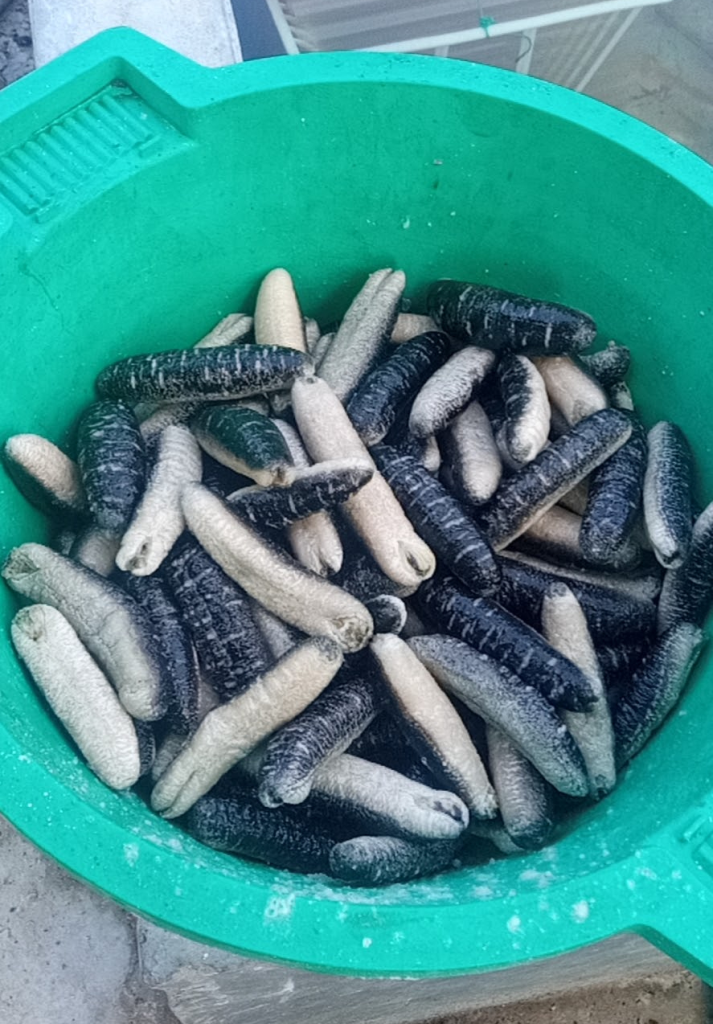
M Thivagaran, president of the Jaffna Sea Cucumber Cultivators’ Association, said sea cucumber cultivation had given a ray of hope to fishermen suffering severe losses.
“Annually, a sea cucumber cultivator can earn a guaranteed sum of 1 million rupees (US$2,830), but a fisherman earns barely 480,000 (US$1,333), which is not guaranteed in the current economic scenario and at a time when Indian trawlers look unstoppable,” said Thivagaran. He said 300 fishermen in Jaffna, the capital of the Northern Province, had switched to sea cucumber cultivation since last year.
India-China rivalry
Critics have also raised concerns about the sea cucumber initiative as it comes at a time when China – one of Sri Lanka’s largest creditors with at least US$3.5 billion of outstanding loans – is being partly blamed for pushing the nation into a debt crisis.
Traditionally, India is seen to be closer to Sri Lanka’s north, largely because of the shared Tamil ethnicity, but China has also been making inroads in the region as both superpowers compete to gain a strategic edge over the island nation.
Last year, China’s ambassador in Sri Lanka, Qi Zhenhong, distributed rations to fishermen affected by Indian trawlers. In May this year, at the peak of the economic crisis, India sent 15,000 litres of kerosene to northern Sri Lanka’s fishermen.
Jaffna-based economist Vivekanandan Niranjan said Sri Lanka was allowing the India-China “geopolitical game” to play out in its territory because of the lack of political and economic stability.
Niranjan added that New Delhi and Beijing will use the island nation to settle scores with each other till it returns to normalcy.
“But both countries must understand that Sri Lankans are worried if the two are capitalising on the island’s current instability and using its territory as the playground,” he said.
Appeared in South China Morning Post on 4 September 2022: https://www.scmp.com/week-asia/economics/article/3191231/indian-trawlers-steal-sri-lankan-fish-chinese-sea-cucumber-firm’
By Sonia Sarkar
With a third of Pakistan inundated by the floods that have affected more than 33 million people, local relief workers and public health experts have said that they are fearing a rise in several waterborne and mosquito-borne diseases and skin infections.12
Public health expert Malik Muhammad Umair, who was part of response teams led by an international non-profit organisation after the 2005 earthquake and floods in 2010, told The BMJ, “With most of the flood affected areas having limited access to safe drinking water, the biggest threat is from waterborne diseases such as diarrhoea, typhoid, and cholera. Also, mosquito breeding that has increased because of stagnant water may also lead to high numbers of malaria and dengue cases, which Pakistan has already been grappling with.”
Of Pakistan’s 154 districts, 116 have been affected by the floods, caused by heavy monsoon rains that started in mid-July.3 The most affected provinces are Punjab, Sindh, Khyber Pakhtunkhwa, Balochistan, and Gilgit-Baltistan and the Pakistan administered parts of Jammu and Kashmir. Over 1162 people have died so far.4
Amid criticism that the government isn’t doing enough for people affected by the floods,5 on Wednesday 31 August the prime minister, Shehbaz Sharif, announced 10 billion Pakistani rupees (£40m; €46m; $46m) to rehabilitate affected areas.6
Around half of the villages in northwestern Khyber Pakhtunkhwa province are not accessible because most roads and bridges have collapsed. Medical teams have had to swim to reach flood victims, said the freelance photographer and social worker Mohammad Asmar Hussain of the 150 volunteer strong Dera Ismail Khan Flood Relief Force, which has supplied food to more than 30 000 people and makeshift tents to those made homeless, as well as medical care.
Its medical teams have found a rise in scabies and fungal skin infections, Hussain said.
The World Health Organization said that around 890 health facilities had been damaged and that access to “health facilities, healthcare workers, and essential medicines and medical supplies” remained the main healthcare challenges.7
Umair, who recently visited flooded parts of southeastern Sindh province, said that many basic health units and rural health centres there were under water. “Pregnant mothers are facing a major challenge because of the lack of healthcare centres to assist childbirth,” he said.
Nadeem Jan, an expert in health and public policy who led Pakistan’s polio eradication programme in Khyber Pakhtunkhwa, warned that the floods will effect the nutrition of children in the province, where every second child (an estimated 800 000 children under the age of 5 years) is stunted.8
The Pakistani sportswoman Noorena Shams, who distributed sanitary kits to 7525 women in Khyber Pakhtunkhwa using 1.5 million Pakistani rupees that she collected for relief work, said, “The disposal of these sanitary pads, however, is a big problem. We are looking for someone who can supply reusable ones.”
Shams is also working with local relief workers on the ground to provide makeshift toilets only for women.
Jan feared that the “high population displacement” and change of national priorities brought by the floods would pose a formidable challenge to sustain the momentum needed for a successful polio vaccination programme. Pakistan has reported 15 cases of wild poliovirus so far this year.
WHO has diverted mobile medical camps to affected districts, delivered more than 1.7 million water purification tablets, and provided sample collection kits to ensure early detection of infectious diseases.9
The scale of the emergency was “huge,” but the overall response to the floods from UN agencies and international non-profit organisations had been “sluggish” in comparison with the more coordinated efforts after the 2005 earthquake and 2010 floods, said Umair, the founder of the Pakistan Public Health Forum, a virtual network of over 250 public health experts across the country.
Government agencies and the non-profits must coordinate their efforts to provide food and safe clean drinking water and healthcare facilities, he added. “People’s homes, agricultural land, and livestock have been destroyed in the floods. There isn’t any food security either, so they need dry food such as chickpeas, biscuits, powdered milk, and dates, besides portable water purification tablets.”
Pakistan’s planning minister, Ahsan Iqbal, has asked rich nations to help the country pay for the damage—estimated at $10bn—caused by the flood, which the government has called a “climate catastrophe.”1011
This year Pakistan, which is responsible for only 1% of the world’s carbon emissions, has witnessed climate related disasters such as searing heatwaves, droughts, and melting glaciers.12
Rain cycles and weather patterns have changed over the past decade, the Khyber Pakhtunkhwa based climate change activist Ehtisham Hassan said, but he added that local authorities were also partly responsible for disasters induced by climate change. “For example, they dump uranium waste into the river Indus, which flows by Punjab’s Dera Ghazi Khan district, one of the flood affected areas. The government must frame its policies keeping the impact of such irresponsible actions in mind,” Hassan said.
Local communities in Khyber Pakhtunkhwa blamed the government for allowing the construction of hotels on the banks of the river Kunhar in the alpine Kaghan valley and adjacent valleys, affected by the flooding.13
Hassan said that many people made homeless will be displaced for life.
References
- ↵Sands L. Pakistan floods: One third of country is under water—minister. BBC News. Aug 2022. https://www.bbc.com/news/world-europe-62712301.
- ↵Pakistan floods hit 33 million people in worse disaster in a decade, minister says. CNN. Aug 2022. https://www.cnn.com/2022/08/25/asia/pakistan-flooding-climate-minister-intl-hnk/index.html.
- ↵WHO Pakistan floods situation report issue 1: 30 August 2022. Reliefweb. Aug 2022. https://reliefweb.int/report/pakistan/who-pakistan-floods-situation-report-issue-1-30-august-2022.
- ↵Pakistan I. fears of waterborne diseases as floods recede. Politico Pro. Aug 2022. https://subscriber.politicopro.com/article/eenews/2022/08/31/in-pakistan-fears-of-waterborne-diseases-as-floods-recede-00054338.
- ↵Pakistani government faces criticism for flood response. Voice of America. Aug 2022. https://www.voanews.com/a/pakistani-government-faces-criticism-for-flood-response-100027709/123326.html.
- ↵Shehbaz announces Rs10bn for KP as crises swirl. Dawn. Sep 2022. https://www.dawn.com/news/1707845/shehbaz-announces-rs10bn-for-kp-as-crises-swirl.
- ↵Pakistan floods: Over 33mn people affected, 6.4mn in dire need of aid, says WHO. The Print. Aug 2022. https://theprint.in/world/pakistan-floods-over-33mn-people-affected-6-4mn-in-dire-need-of-aid-says-who/1109736.
- ↵Malnutrition and its consequences for KP’s children. Dawn. Apr 2018. https://www.dawn.com/news/1398928.
- ↵Pakistan: WHO warns of significant health risks as floods continue. UN News. Aug 2022. https://news.un.org/en/story/2022/08/1125872.
- ↵Pakistan minister says West has “responsibility” to help with floods as it’s caused climate change. Sky News. Aug 2022. https://news.sky.com/story/pakistan-minister-says-west-has-responsibility-to-help-with-floods-as-its-caused-climate-change-12685003.
- ↵Seabrook V. Who should pay for a “climate catastrophe”? Pakistan’s savage flooding reignites debate. Sky News. Aug 2022. https://news.sky.com/story/who-should-pay-for-a-climate-catastrophe-pakistans-savage-flooding-reignites-debate-12685103.
- ↵Melting glaciers, growing lakes and the threat of outburst floods. Reliefweb. Aug 2022. https://reliefweb.int/report/pakistan/melting-glaciers-growing-lakes-and-threat-outburst-floods.
- ↵Javed F. Pakistan flood victims throw note pleading for help. BBC News. Aug 2022. https://www.bbc.com/news/world-asia-62710230.
Published in British Medical Journal on 2 September, 2022
My mask and my mind
Posted on: August 25, 2022
After taking an overnight choc-a-bloc flight from Delhi that triggered my fear of contracting Covid-19, I thought a 30-minute run under Singapore’s crimson red evening sky was the best way to overcome my tiredness and anxiety.

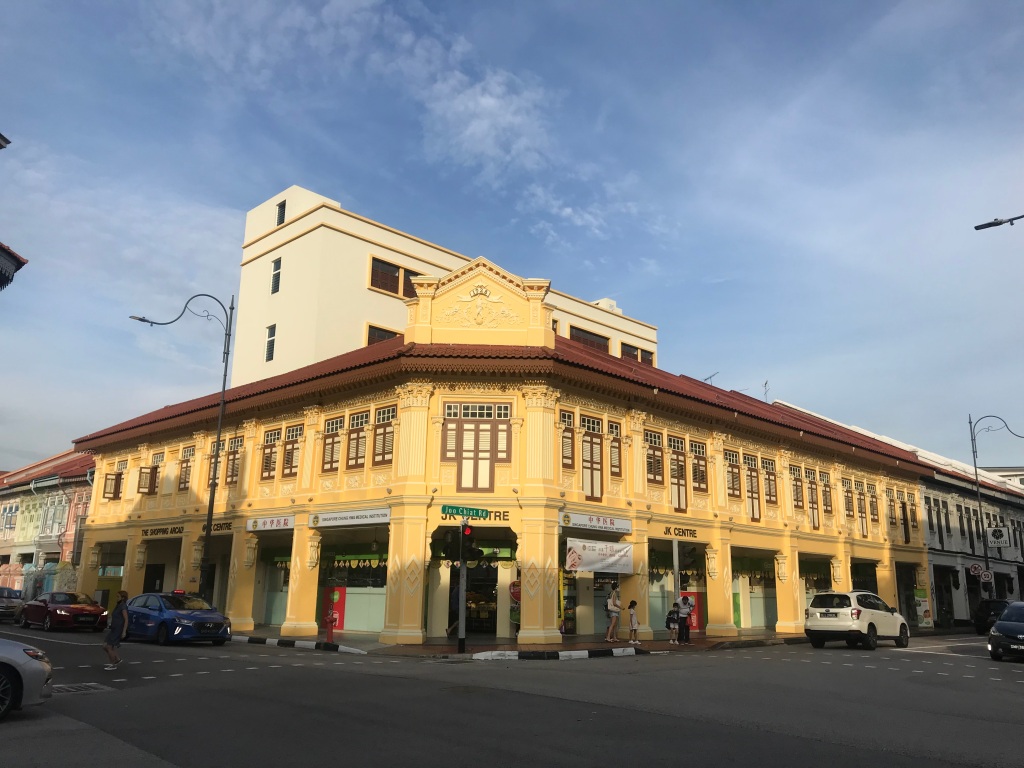
It was April, and it wasn’t mandatory for people in Singapore to wear masks outdoors. Yet, I wore it. I pulled it down while I was running but covered my nose and mouth carefully, every time, I waited at the traffic light among herds of people. When I spotted a few people without masks, I wondered how safe it was to be around a maskless crowd, what if I got infected and then infected my mother in turn, who was travelling along with me, and if our vaccines were good enough to protect us.
I wanted to convince myself that if Singapore had allowed people to move outdoors without masks, it must have had some rationale behind phasing out Covid-19 restrictions gradually. After all, it managed the pandemic exceedingly well – by keeping the cases low. From testing to contact tracing to vaccination – Singapore didn’t let its guards down unlike India, which witnessed over 527,000 Covid-19 deaths so far.

Last year, India messed up badly during the second wave when over 512 Covid-19 patients died without oxygen. In the eastern city Kolkata, where I lived throughout the second wave, I witnessed the desperation of my cousin to put my paternal aunt in a more advanced private hospital with the hope of a better treatment but his efforts were in vain. After battling for life for over three weeks, my aunt passed away. One maternal aunt, who tested positive after showing mild symptoms, died in a government-run hospital. I received frantic calls from friends desperately seeking help for oxygen concentrators and remdesivir – a drug which was widely prescribed by doctors then. The Indian government was criticised widely for its lackadaisical attitude towards controlling the pandemic. Not just that, the world even doubted one of the vaccines India gave it to its citizens.
While my clash with my mind over taking off my mask outdoors continued for the initial days in Singapore, I learnt that other countries in the region started easing out travel restrictions. In May, we booked our tickets to Bangkok.
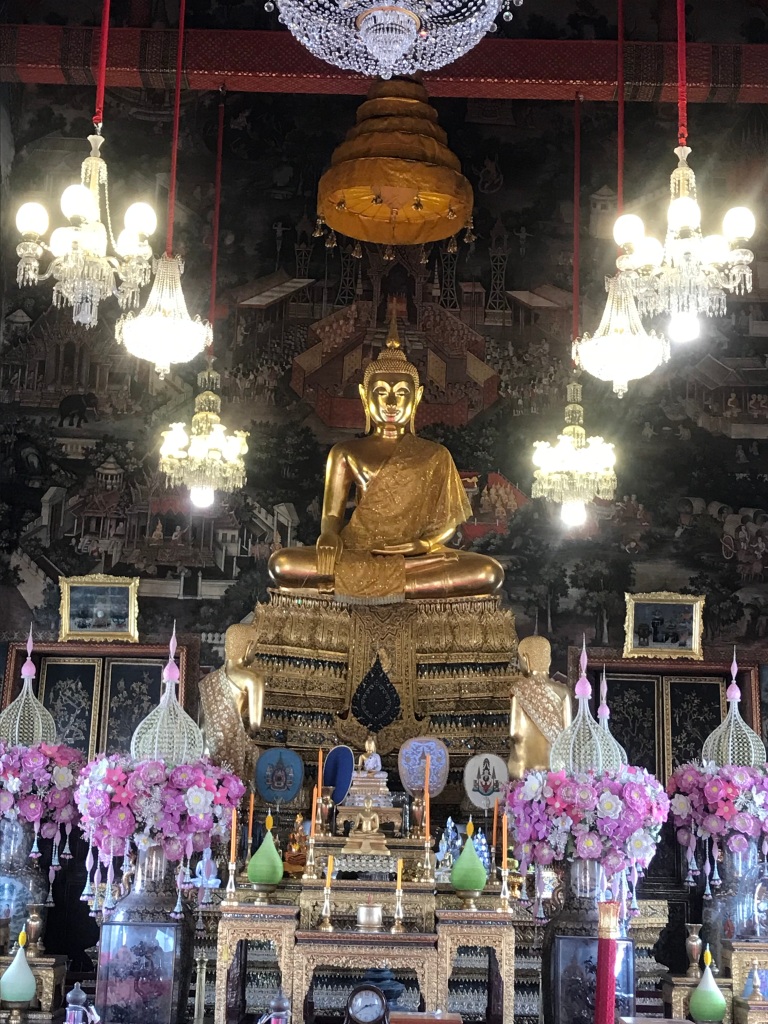
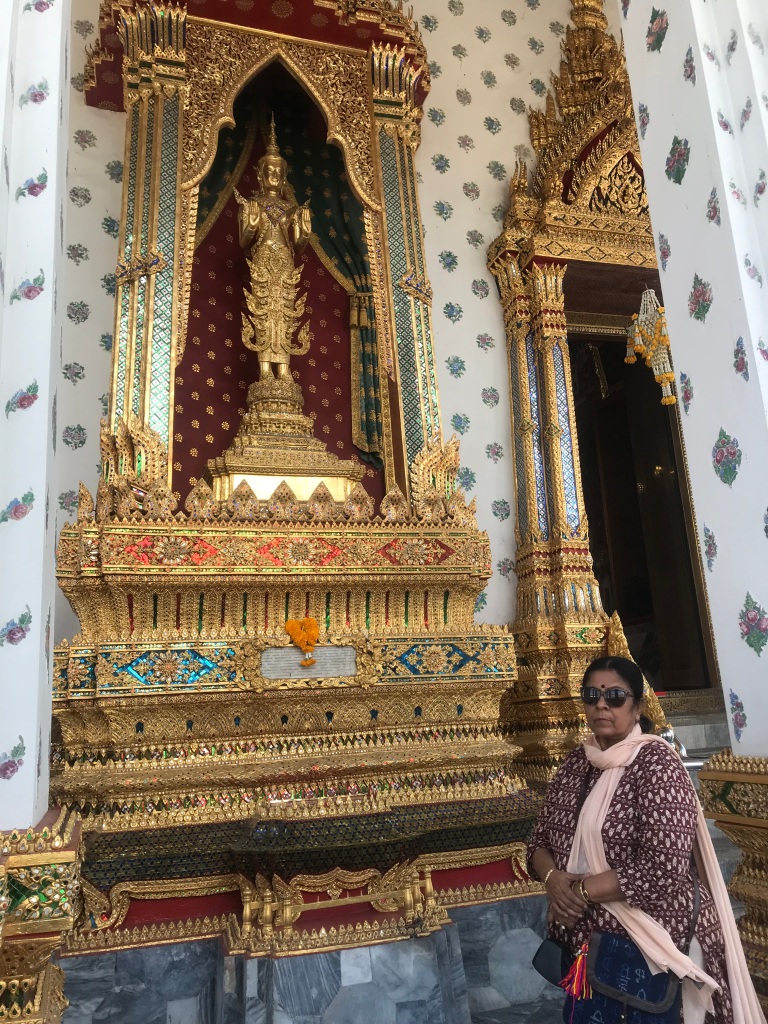
After completing the immigration formalities at the deserted Bangkok airport, when we boarded the taxi, we discovered that a glass shield separated us from the driver. The streets were not crowded but every person on the street was wearing a mask. It triggered my fears again. I wanted to check the daily Covid-19 cases in Bangkok but couldn’t do it instantly because I didn’t have a local internet connection.
After a 45-minute drive from the airport, we stood in a long queue in front of a sole receptionist, who was juggling between guests wanting to either check in or check out. A porter of this four-star hotel later told me that they had retrenched a lot of their staffers during the pandemic, and although the guests started pouring in again, the skeletal staff was forced to cater to them.
Nevertheless, when our turn came, the receptionist asked us to do an RT-PCR test and be confined to the room till the test results came out. The next morning, we were told, we tested negative.
For the next six days, we had several interactions with the public, something I consciously avoided throughout the pandemic. We ate complimentary breakfast at the hotel’s restaurant, overlooking the busy Ploenchit BTS station. We travelled in skytrains, taxis and tuk-tuks. We visited temples and night markets. Often, we were forced to pull down our masks to inhale some fresh air to escape the sweltering heat.
We also travelled to Pattaya to enjoy the sea and the nightlife. The beach road was deserted, most of the bars were shut and the restaurants were barely open for a few hours to serve guests, who unfortunately were made to wait for nearly a lifetime for their meal. Barring one, all currency exchange counters on the beach road were shut. While walking down the road — considered the epicentre of sex tourism in Pattaya — one night, I spotted a few young women on the long promenade – waiting for potential clients for sex work. Some were busy on video calls, trying to solicit. With such a handful of tourists around, most women, perhaps, had to wait for customers all night.
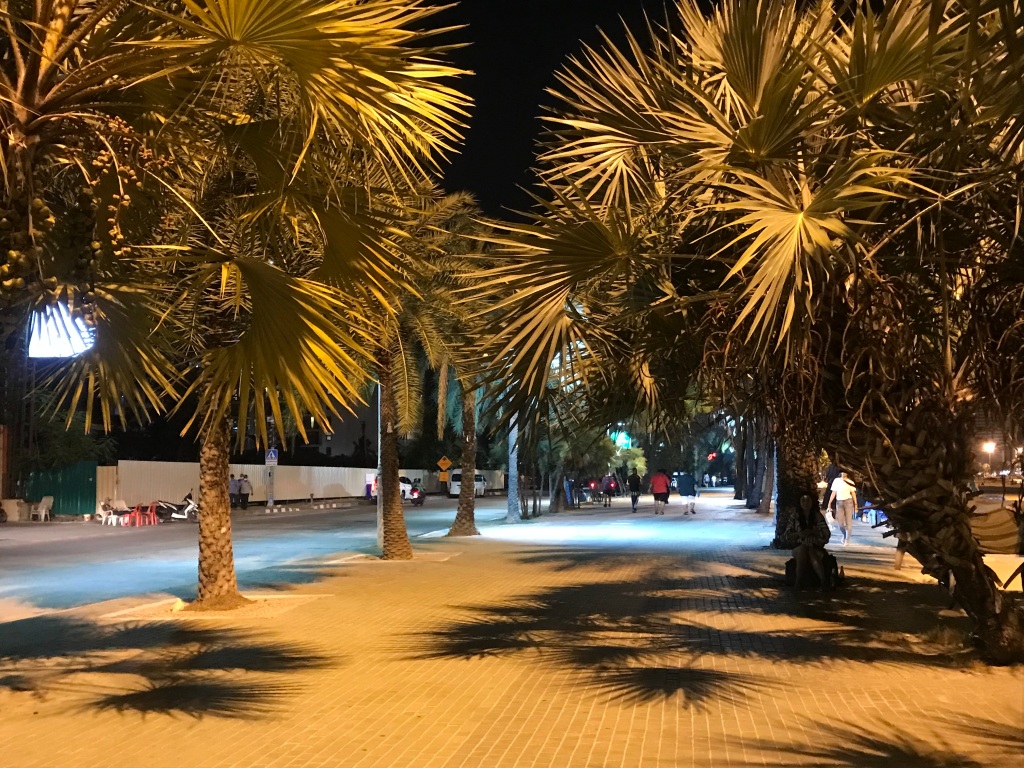
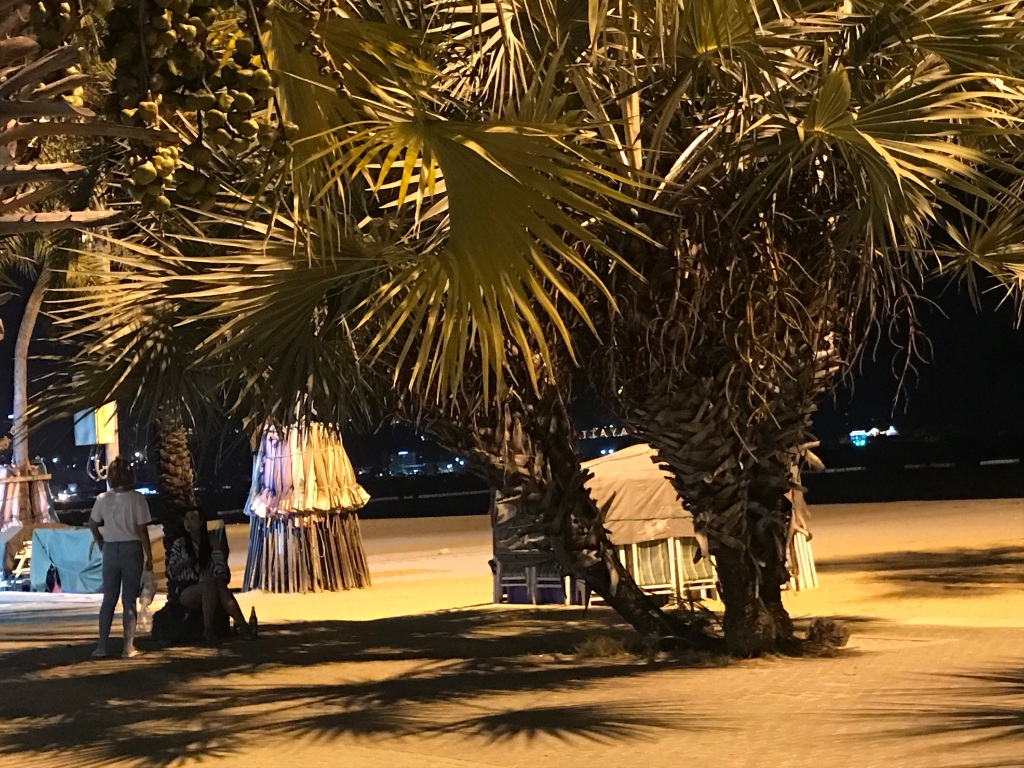
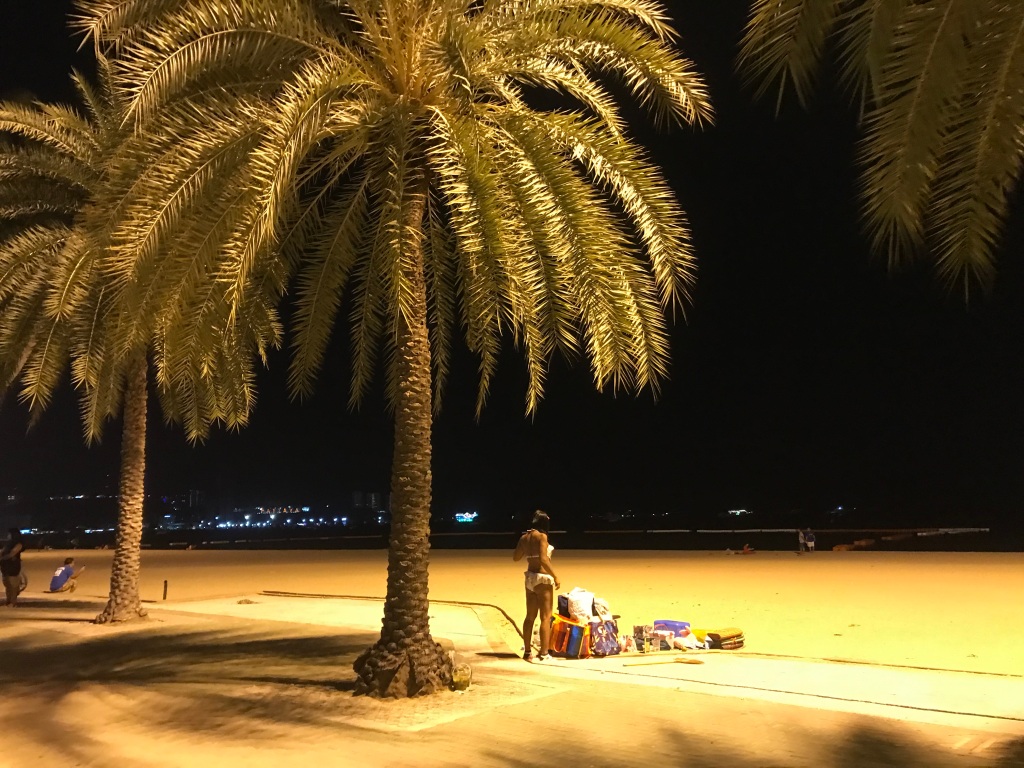
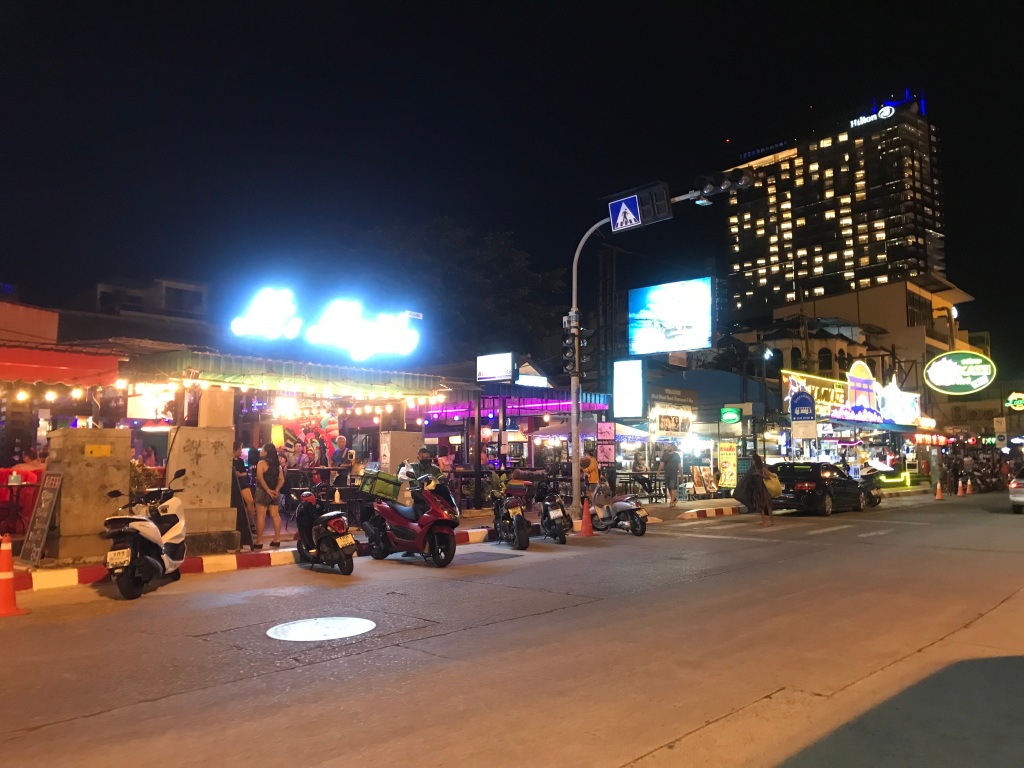
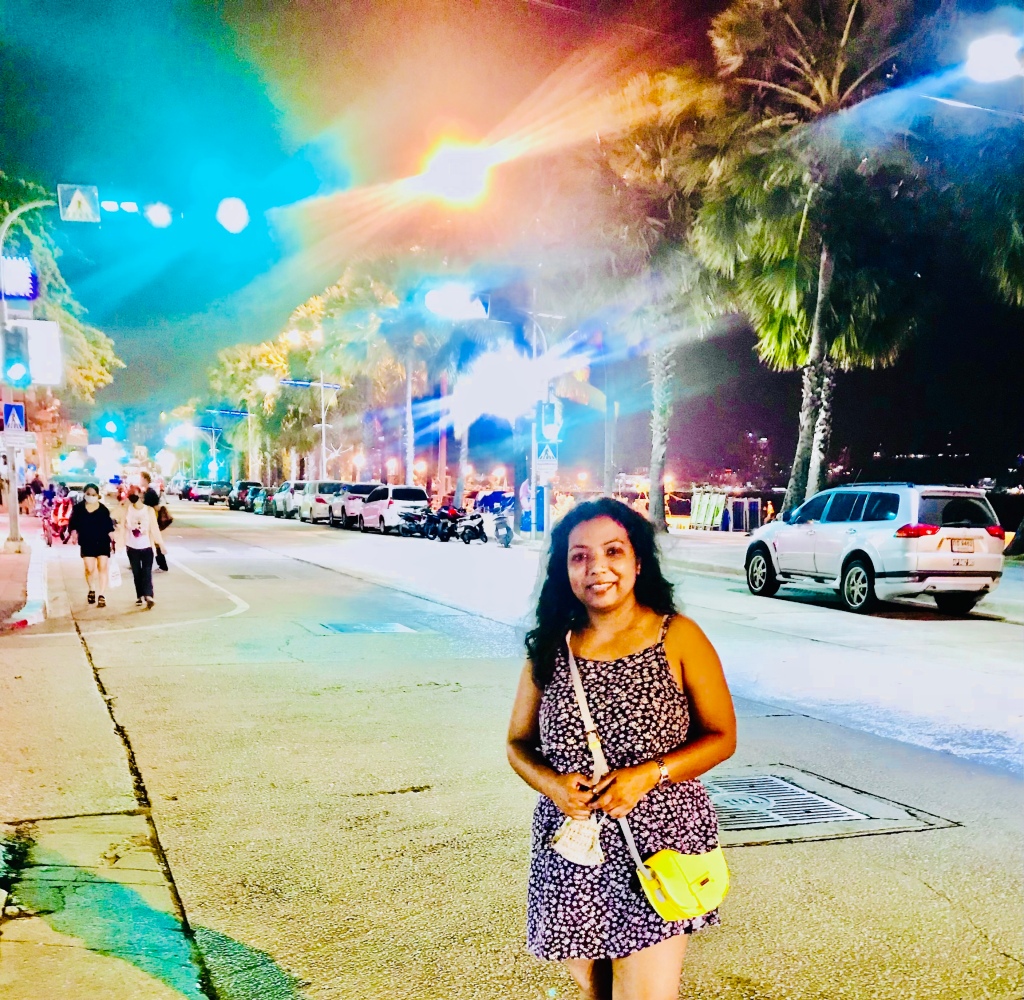
For the first time, I realised how tourism-driven businesses have been severely hit by the pandemic. Reports suggested the pandemic pushed over 800,00 people in Thailand into poverty.
That’s the reason why countries must push to reopen. It’s about time we bring things back to normal and start our post-pandemic life.
After coming back to Singapore, my relationship with my mask changed to a great extent. It kept hanging around my arm while I went outdoors. I attended a Sunday prayer meeting in a church that ran in an enclosed room. I ate at food courts and restaurants, almost every day, without any sense of guilt or fear.
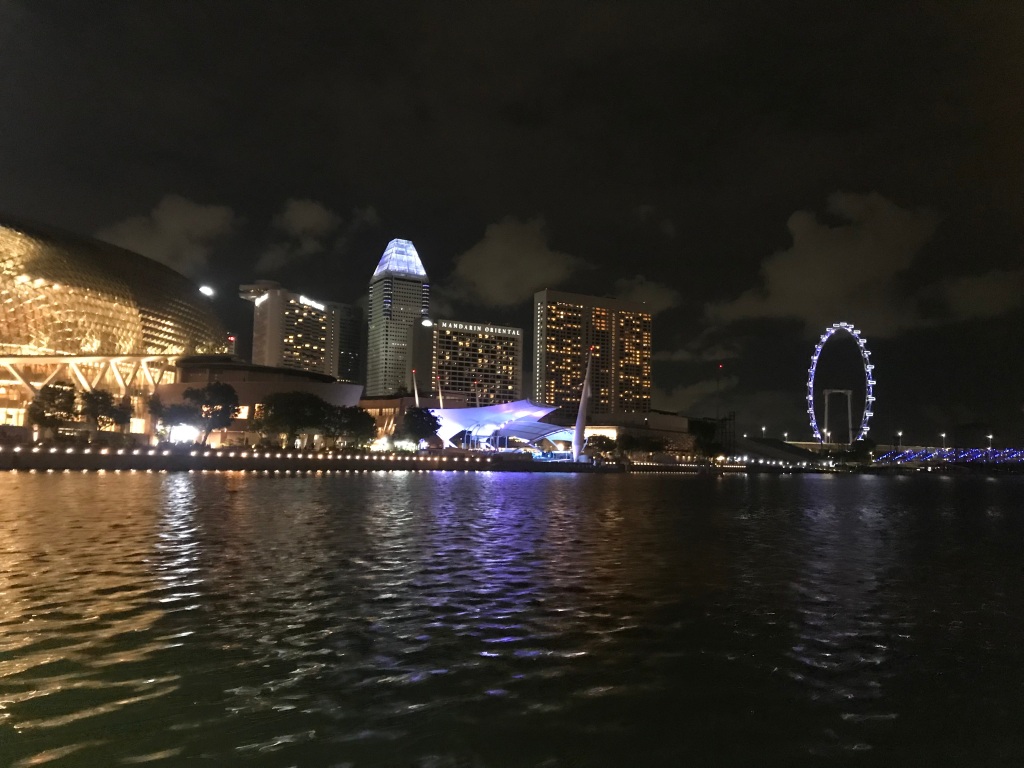
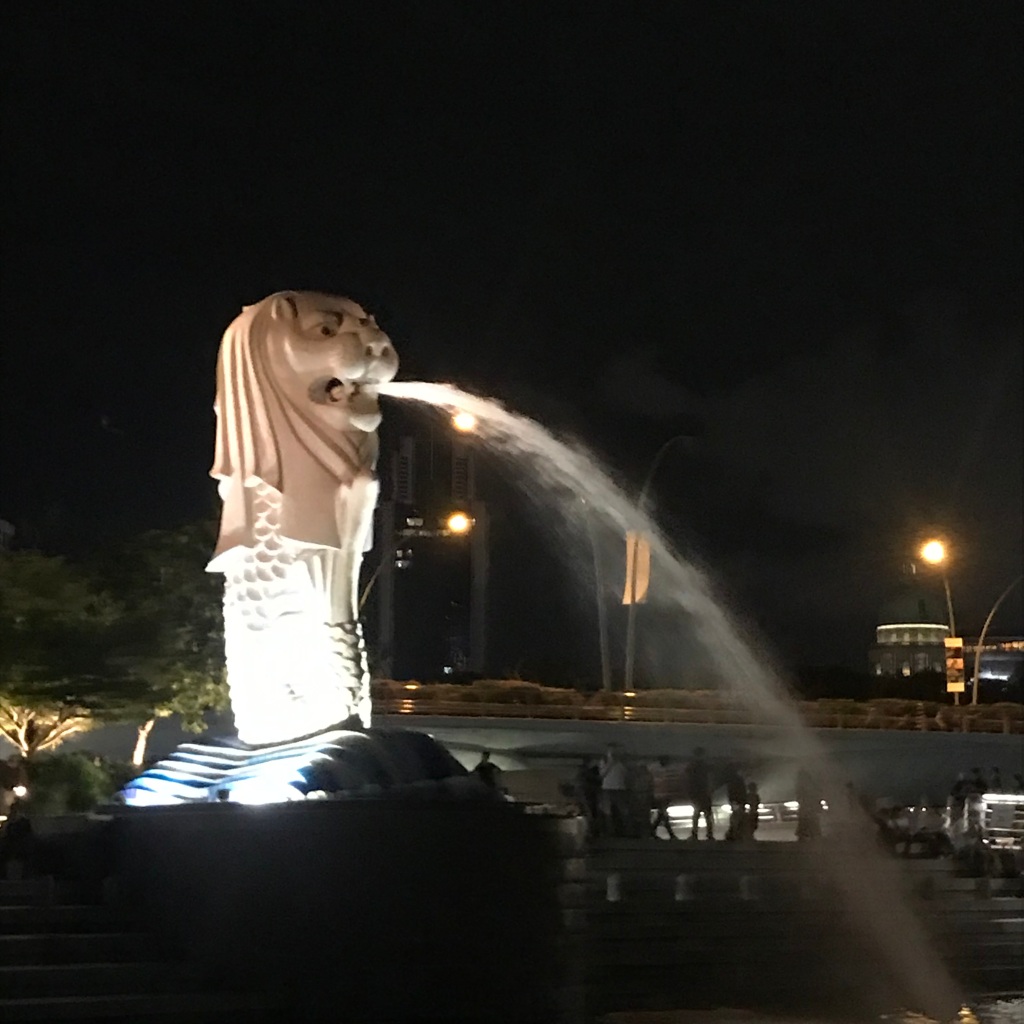
My Singapore and Thailand trips were eye-openers for me. It wasn’t just an ordinary journey to two beautiful south-east Asian countries. It was a journey that transformed my fear and panic to rationality and acceptance of reality.
This month, when I travelled across Sri Lanka, a tourism-driven country, to cover the impact of economic crisis, I realised people are more concerned about the collapsing economy more than Covid-19. Although a large section of them were wearing masks, they wanted foreigners to visit Sri Lanka so that the tourism trade, which is its one of the biggest foreign currency earners, come gradually back on its feet.
Despite prices have tripled, it won’t be much expensive for an average tourist from India or the West because the value of Sri Lankan rupees has fallen drastically. This economic crisis, which was party triggered by wrong policy decisions, mismanagement and partly by the economic lockdown during the pandemic that killed about 16,000 people in Sri Lanka is a lesson for all that shutting down businesses in fear will eventually take the country to a point of no return.
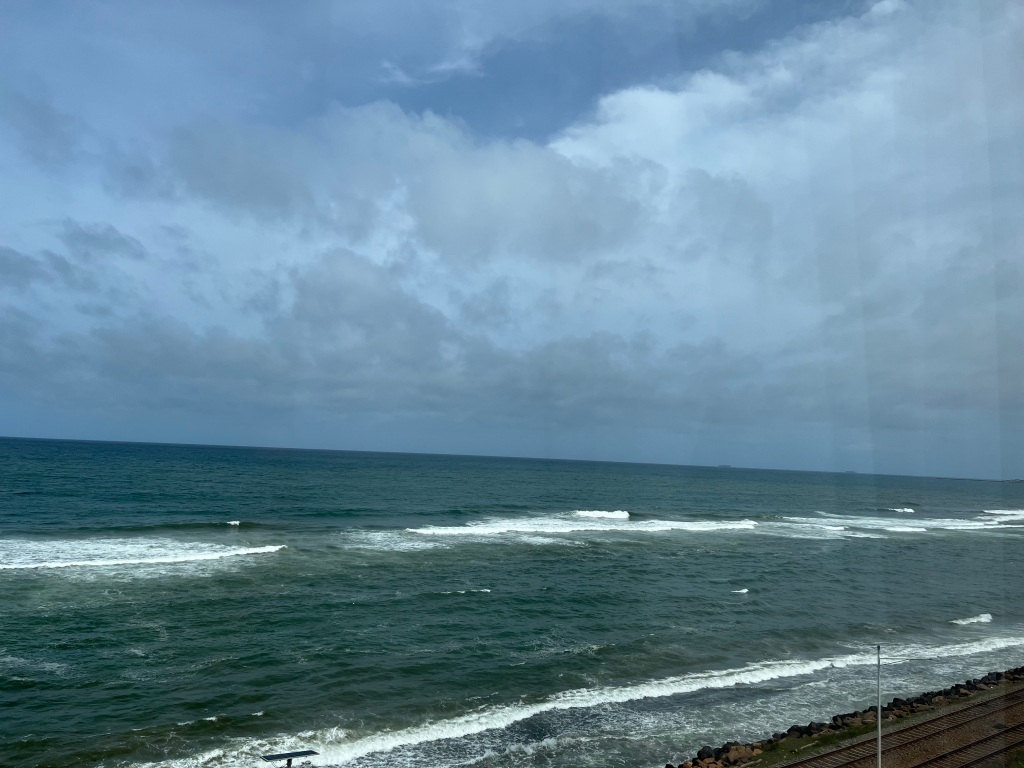
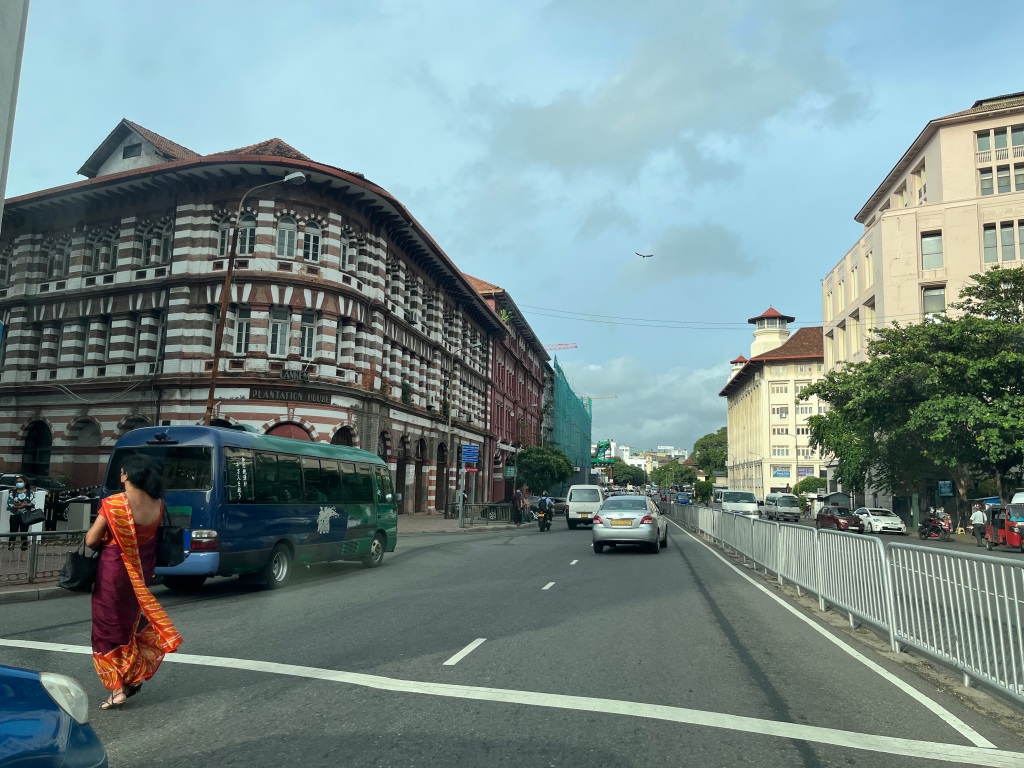
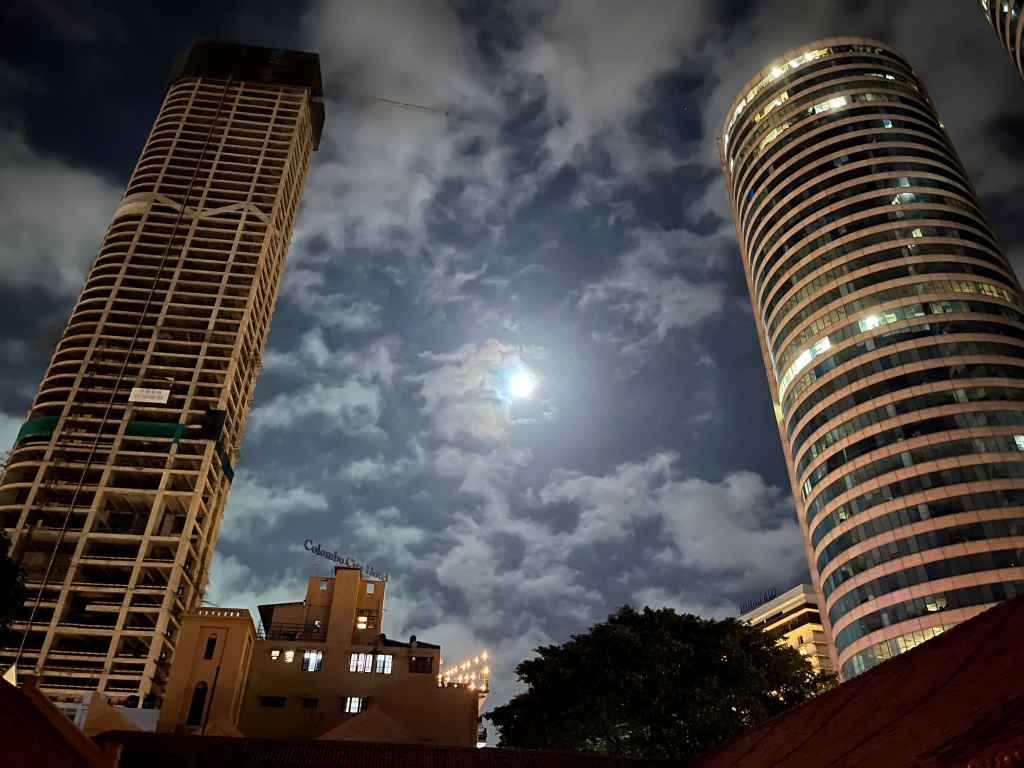
Now, back in India, unlike the past, I don’t check daily Covid-19 numbers anymore. I attend lunches at large gatherings; I watch new releases at theatres. I keep my mask handy, but I don’t panic when I see maskless people around. I am convinced that Covid-19 is here to stay but life cannot come to a standstill because we choose to nurture our fears, and not look for ways to go back a normal life.
I don’t let my mask play the mind game with me anymore.
ENDS